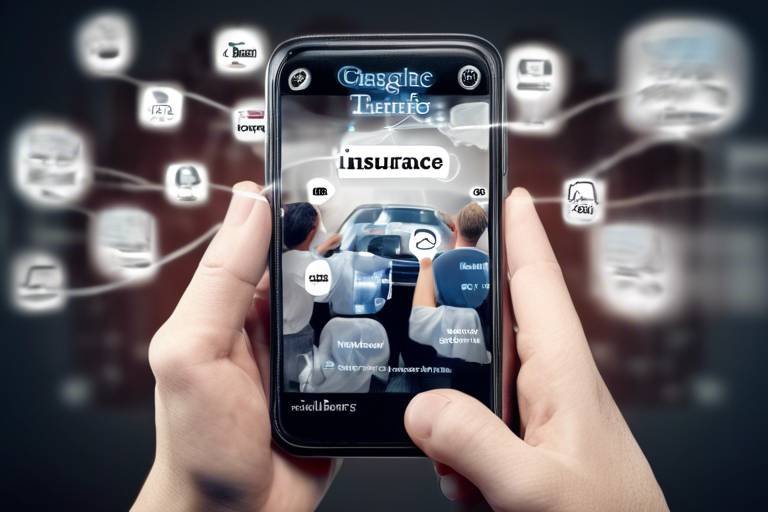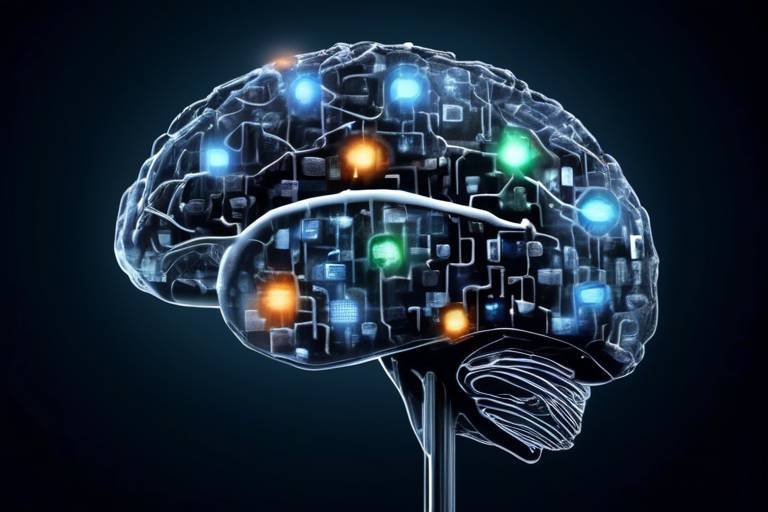The Future of Autonomous Drones - Applications and Impacts
The world of technology is constantly evolving, and one of the most exciting advancements in recent years is the rise of autonomous drones. These flying machines, equipped with advanced sensors and artificial intelligence, are transforming various sectors, from agriculture to emergency services. But what does the future hold for these aerial marvels? In this article, we’ll dive deep into the myriad applications of autonomous drones and explore their potential impacts on society, the economy, and regulatory frameworks.
To truly appreciate the impact of autonomous drones, we must first understand the technology behind them. At their core, these drones consist of several key components, including navigation systems, sensors, and advanced software algorithms. Navigation systems, often powered by GPS and inertial measurement units, allow drones to fly autonomously, avoiding obstacles and reaching their destinations efficiently. Recent advancements in technology have significantly improved their autonomy and efficiency, making them reliable tools for various applications.
One of the most significant areas where autonomous drones are making waves is in agriculture. Farmers are increasingly turning to these flying assistants for tasks such as precision farming, crop monitoring, and data collection. By leveraging drone technology, agricultural practices are becoming more sustainable and productive, leading to increased yields and reduced resource waste.
Imagine a farmer being able to monitor their entire field from the sky! Autonomous drones enable real-time crop monitoring, allowing farmers to detect issues like nutrient deficiencies or water stress early on. This early detection not only optimizes resource usage but also enhances productivity and sustainability, ultimately benefiting both the farmer and the environment.
Another critical application of drones in agriculture is their role in pest and disease management. Drones can swiftly identify pest infestations and crop diseases, enabling targeted interventions that minimize the use of harmful pesticides. This not only protects crops but also promotes healthier ecosystems.
When it comes to delivery and logistics, autonomous drones are set to revolutionize the industry. With the rise of e-commerce, the demand for faster and more efficient shipping solutions has never been higher. Drones are emerging as a viable option for last-mile delivery, significantly reducing delivery times and costs.
Major e-commerce companies are already integrating drone delivery into their operations. This innovation enhances customer experience by providing rapid delivery options. Imagine ordering a product online and having it delivered to your doorstep within minutes! This is not just a dream; it's becoming a reality thanks to autonomous drones.
Urban air mobility is another exciting concept on the horizon. Drones could help alleviate traffic congestion in cities, providing rapid transport options that bypass traditional roadways. With the potential to transport people and goods, urban air mobility could reshape how we navigate our bustling cities.
In times of crisis, every second counts. Autonomous drones are proving to be invaluable in emergency services, particularly in search and rescue operations. Their ability to cover large areas quickly and provide real-time data can significantly improve the efficiency of rescue missions.
Imagine a drone flying over a rugged terrain, equipped with thermal imaging technology, swiftly locating missing persons. This is the power of autonomous drones in search and rescue operations. They can navigate challenging landscapes, improving the chances of locating individuals in distress.
After a natural disaster strikes, assessing the damage is crucial for recovery efforts. Drones can quickly survey affected areas, providing real-time data that aids in resource allocation and recovery planning. This capability can make a significant difference in how communities respond to disasters.
Autonomous drones are also making strides in environmental monitoring. They are being utilized for wildlife tracking, pollution assessment, and conservation efforts, helping to protect our planet's natural resources.
Drones play a critical role in tracking endangered species and monitoring their habitats. By providing data on wildlife movements and habitat conditions, drones contribute to conservation efforts and biodiversity protection.
Additionally, drones can detect and monitor pollution levels in air and water, providing valuable data for regulatory compliance and environmental protection. This capability is essential for ensuring a sustainable future for our planet.
As the use of autonomous drones becomes more widespread, so do the regulatory challenges surrounding their operation. Current laws often lag behind technological advancements, leading to safety concerns and privacy implications.
Safety risks associated with drone operations cannot be overlooked. There are also significant privacy implications for individuals and communities. Comprehensive regulations are essential to address these concerns and ensure the responsible use of drone technology.
Moreover, the differences in drone regulations across countries pose challenges for creating a unified international framework. As drones become a global phenomenon, harmonizing regulations will be crucial for their safe and effective use.
The future of drone technology is bright, with anticipated advancements in areas such as AI integration, improved battery life, and enhanced autonomy. These developments will shape the future of drone applications and their impact on various sectors.
AI and machine learning are transforming autonomous drones, enabling them to make real-time decisions and adapt to dynamic environments. This integration will enhance their capabilities and broaden their applications.
Future developments in drone autonomy will include improvements in obstacle avoidance and navigation systems. The potential for fully autonomous operations is on the horizon, paving the way for even more innovative applications.
As autonomous drones become more prevalent, their economic implications are significant. They have the potential to create new jobs, offer cost savings for businesses, and even foster the emergence of new markets and industries.
The drone industry is generating new job opportunities in sectors such as technology, logistics, and agriculture. Existing roles are also being transformed, highlighting the need for a workforce skilled in drone technology.
Businesses can achieve substantial cost savings through the implementation of drone technology. By enhancing operational efficiency, drones are helping companies stay competitive in a rapidly changing market.
Public perception plays a crucial role in the adoption of autonomous drones. Concerns about safety, privacy, and the overall benefits they bring to society must be addressed to foster acceptance.
Strategies for addressing public concerns regarding drone safety and privacy are essential. By fostering a positive perception of autonomous drone technology, we can pave the way for its broader acceptance.
Community engagement is vital in the deployment of drone projects. Ensuring that public interests and feedback are considered in the planning process will help build trust and acceptance among communities.
Q1: What are autonomous drones?
A1: Autonomous drones are unmanned aerial vehicles equipped with advanced technology that allows them to operate without human intervention, making decisions based on real-time data.
Q2: How are drones used in agriculture?
A2: Drones are used in agriculture for crop monitoring, pest management, and data collection, helping farmers optimize their resources and increase productivity.
Q3: What are the safety concerns associated with drones?
A3: Safety concerns include the risk of collisions, privacy issues, and the need for comprehensive regulations to ensure safe operation.
Q4: How can drones impact the economy?
A4: Drones can create new job opportunities, enhance operational efficiency for businesses, and lead to the emergence of new markets and industries.
Q5: What is the future of drone technology?
A5: The future of drone technology includes advancements in AI integration, improved battery life, and enhanced autonomy, leading to broader applications across various sectors.
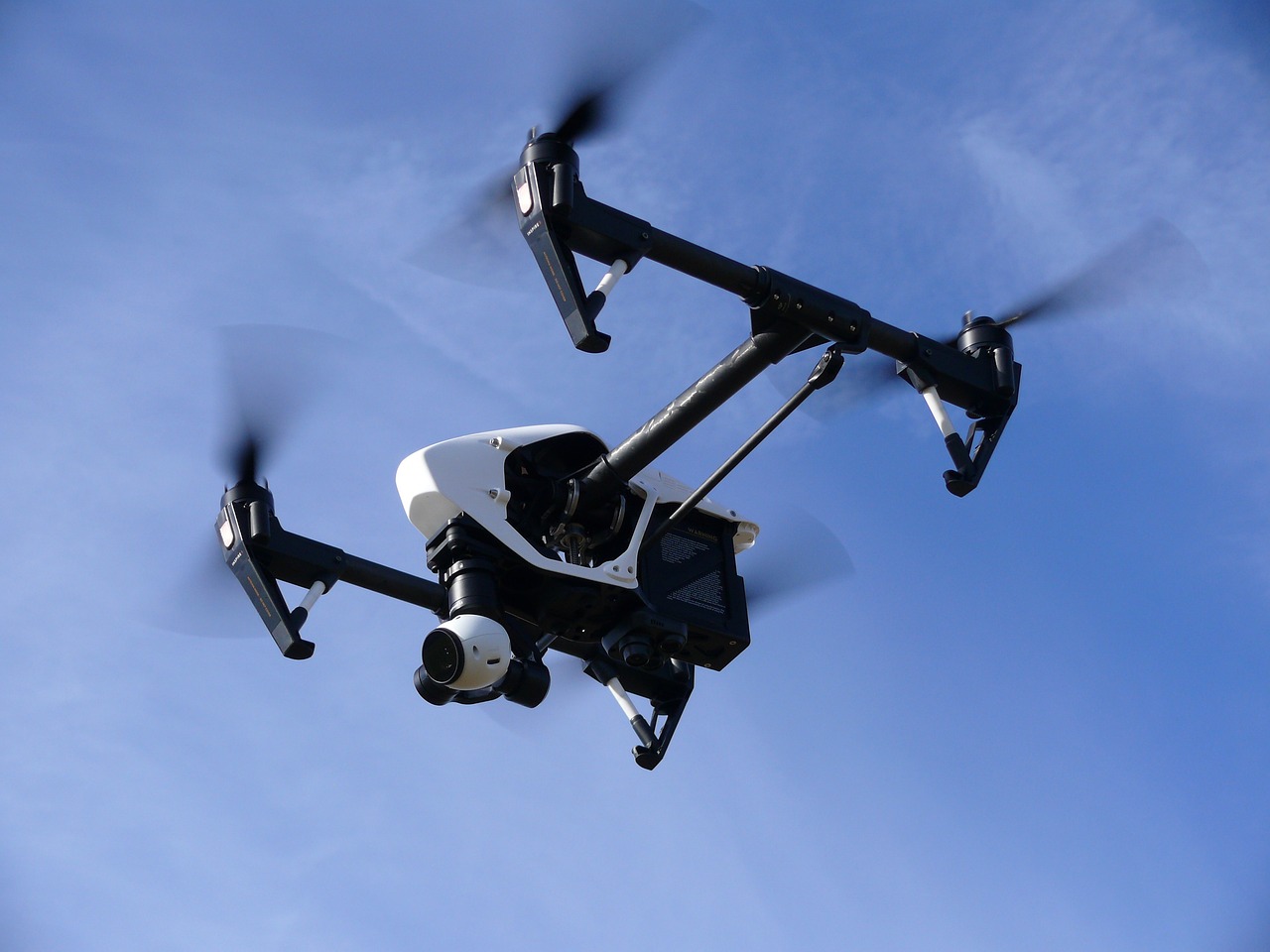
1. Overview of Autonomous Drone Technology
This article explores the evolving landscape of autonomous drones, examining their diverse applications across various sectors and the potential impacts on society, economy, and regulations.
Autonomous drones are at the forefront of technological innovation, representing a fusion of cutting-edge hardware and sophisticated software. At their core, these flying machines are equipped with a variety of components that enable them to operate independently, without the need for human intervention. The key elements include:
- Navigation Systems: These systems utilize GPS, inertial measurement units (IMUs), and sometimes even visual recognition technologies to navigate through various environments safely.
- Sensors: Drones are outfitted with an array of sensors, including cameras, LiDAR, and thermal sensors, which help them gather data and make informed decisions.
- Communication Modules: These allow drones to communicate with each other and ground control, ensuring they can relay information and receive updates in real time.
The advancements in autonomy have been remarkable, primarily driven by improvements in artificial intelligence (AI) and machine learning algorithms. These technologies empower drones to analyze data on the fly, adapt to changing conditions, and even learn from their experiences. Imagine a drone that can autonomously navigate through a forest, avoiding trees and other obstacles while simultaneously mapping the terrain. This level of sophistication was unthinkable just a few years ago!
Moreover, the efficiency of autonomous drones has increased significantly. With longer battery lives and enhanced payload capacities, these machines are capable of executing complex missions that were once limited to human pilots or ground vehicles. The evolution of drone technology has opened up a world of possibilities across various sectors, from agriculture to emergency services, and the implications are profound.
As we look at the current landscape, it’s crucial to understand the implications of these advancements. Autonomous drones are not just tools; they are transforming industries, creating new business models, and even reshaping our daily lives. Whether it’s a farmer using drones to monitor crops or a logistics company deploying them for last-mile delivery, the impact of this technology is undeniable.
In summary, the future of autonomous drone technology is not just about flying robots; it’s about how these machines will integrate into our society, enhance productivity, and ultimately change the way we interact with the world around us. As we delve deeper into their applications in various sectors, we will uncover the myriad ways in which they are poised to revolutionize our lives.
1. What are autonomous drones?
Autonomous drones are unmanned aerial vehicles that can operate without human control, utilizing advanced navigation systems and AI to perform tasks independently.
2. How are drones used in agriculture?
Drones are used in agriculture for crop monitoring, precision farming, and data collection, helping farmers optimize resource usage and enhance productivity.
3. What are the safety concerns regarding autonomous drones?
Safety concerns include potential collisions, privacy issues, and the need for regulatory frameworks to ensure safe operation in shared airspace.
4. How does AI enhance drone technology?
AI allows drones to make real-time decisions, adapt to changing environments, and improve their operational efficiency through machine learning.
5. What is the future of drone technology?
The future of drone technology includes advancements in AI, improved battery life, and greater autonomy, paving the way for new applications and industries.
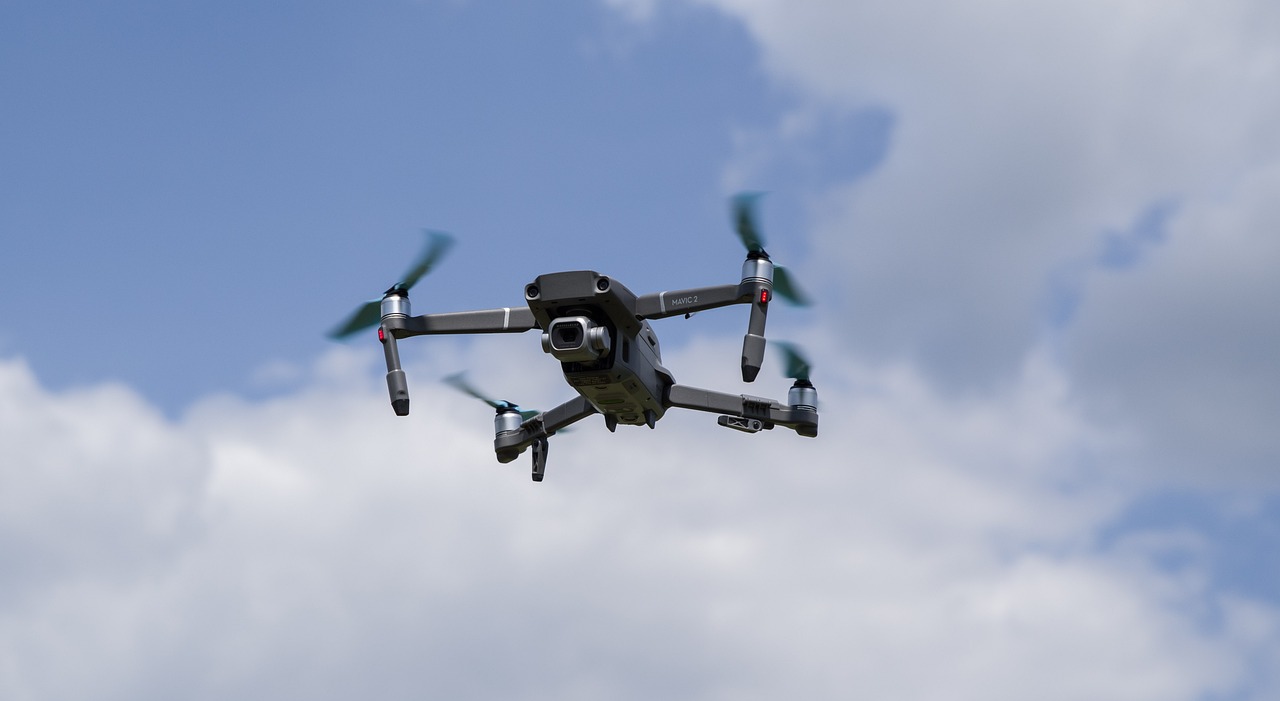
2. Applications in Agriculture
Autonomous drones are truly transforming the agricultural landscape, ushering in a new era of precision farming and efficiency. Imagine a farmer standing in a vast field, armed not with just a hoe and a tractor, but with a fleet of drones buzzing overhead, collecting invaluable data that was once tedious and time-consuming to gather. These flying marvels are equipped with advanced sensors and imaging technology, enabling them to monitor crop health, assess soil conditions, and even predict yields with remarkable accuracy. This shift from traditional farming methods to a more data-driven approach is not just a trend; it's a revolution that promises to enhance productivity while promoting sustainability.
One of the standout applications of autonomous drones in agriculture is crop monitoring. Drones can cover large areas in a fraction of the time it would take a human or even a tractor. They capture high-resolution images and utilize multispectral sensors to analyze plant health, detecting issues like nutrient deficiencies or water stress before they become visible to the naked eye. This proactive approach allows farmers to make informed decisions, optimizing water usage and fertilizer application, ultimately leading to increased yields and reduced waste.
When it comes to real-time crop monitoring, drones are game-changers. They provide a bird's-eye view of the fields, allowing farmers to instantly identify problem areas. For instance, if a section of a field appears to be underperforming, farmers can investigate further and determine if the issue is related to pests, disease, or even irrigation problems. This immediate feedback loop is crucial in modern agriculture, where every day counts during the growing season. By leveraging drone technology, farmers are not just reacting to problems; they are anticipating and preventing them, leading to a healthier crop and a more sustainable farming practice.
In addition to monitoring crop health, autonomous drones play a pivotal role in pest and disease management. Traditional methods of pest control often involve blanket spraying of pesticides, which can be harmful to the environment and lead to resistance in pest populations. Drones equipped with advanced imaging technology can pinpoint areas of infestation, allowing farmers to apply targeted treatments only where needed. This not only minimizes the use of harmful chemicals but also protects beneficial insects and promotes biodiversity within the ecosystem. The result? Healthier crops and a more sustainable approach to farming.
Furthermore, the integration of drone technology into agriculture extends beyond just monitoring and management. Farmers are now able to collect vast amounts of data that can be analyzed to improve future planting strategies and crop rotation practices. With the power of analytics and machine learning, the insights derived from drone data can lead to smarter decisions, reducing costs and maximizing profits. As we move forward, the potential for autonomous drones in agriculture seems limitless, and their impact on the industry will only continue to grow.
- How do drones improve crop monitoring? Drones provide real-time data and high-resolution images, allowing farmers to detect issues early and optimize resource usage.
- Can drones help reduce pesticide use? Yes, drones can identify specific areas of pest infestations, enabling targeted pesticide application and minimizing overall chemical use.
- What other applications do drones have in agriculture? Besides monitoring and pest management, drones are also used for soil analysis, irrigation management, and even crop spraying.
- Are drones cost-effective for farmers? While there is an initial investment, the long-term savings and increased yields make drones a cost-effective solution for many farmers.
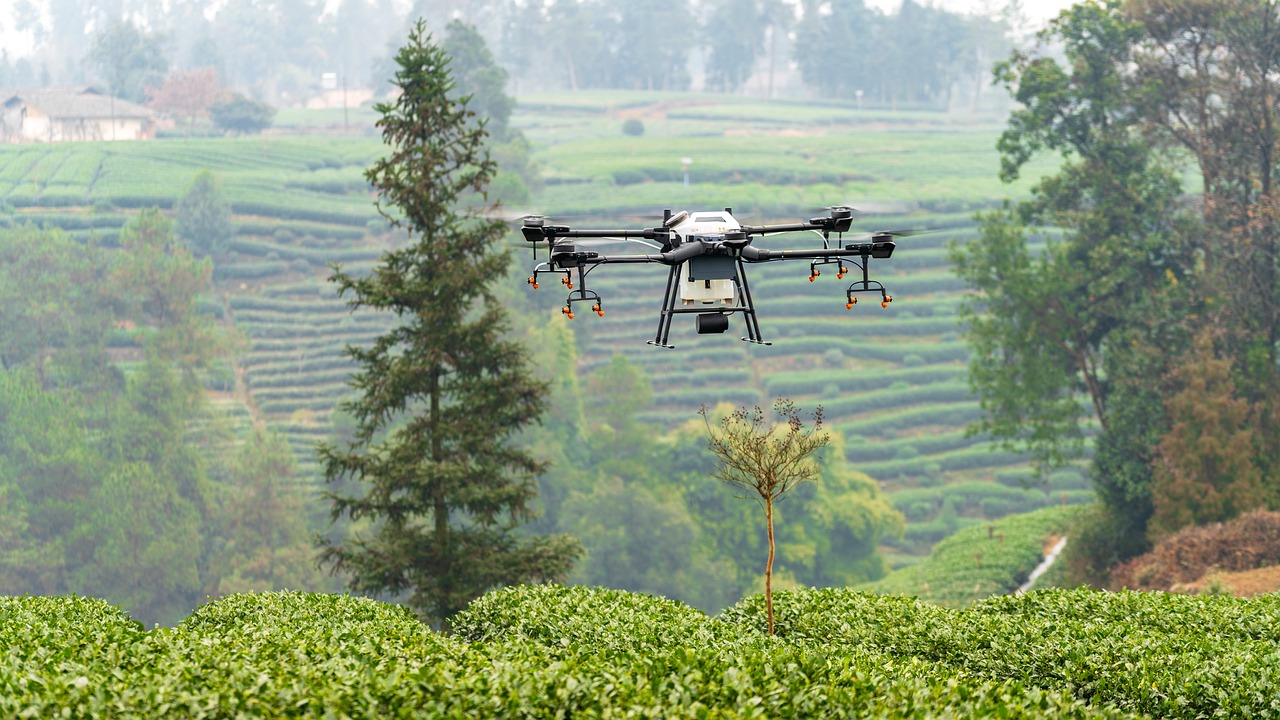
2.1 Crop Monitoring
In the ever-evolving world of agriculture, crop monitoring has emerged as a game-changer, thanks to the advent of autonomous drones. These high-tech flying machines are not just a futuristic novelty; they are becoming indispensable tools for farmers striving to maximize their yields and minimize waste. Imagine a bird's-eye view of your fields, where every inch is meticulously analyzed for health, hydration, and growth. This is no longer a dream; it's the reality that drones bring to modern farming.
Autonomous drones equipped with advanced sensors and imaging technology can cover vast areas in a fraction of the time it would take a human to do the same. They utilize multispectral cameras to capture images across different wavelengths, providing crucial data that goes beyond what the naked eye can see. For instance, these drones can detect variations in plant health, moisture levels, and nutrient deficiencies, enabling farmers to make informed decisions about irrigation and fertilization.
One of the standout features of drone technology in crop monitoring is its ability to provide real-time data. This immediacy allows farmers to react swiftly to any issues that may arise, whether it's a sudden pest outbreak or an irrigation failure. By identifying problems early, farmers can implement targeted solutions, which not only saves money but also conserves resources. For example, if a drone identifies a section of a field that is under-watered, the farmer can focus their efforts on that specific area rather than treating the entire field.
Furthermore, the data collected by drones can be processed and analyzed using advanced software systems. These systems can generate detailed reports and visualizations that help farmers understand trends over time. For instance, a farmer can track the health of their crops throughout the growing season, comparing data from previous years to identify patterns and make predictions for future harvests. This level of insight is invaluable in an industry where every decision can have significant financial implications.
To illustrate the impact of crop monitoring through drones, consider the following table that highlights key benefits:
| Benefit | Description |
|---|---|
| Increased Efficiency | Drones can cover large areas quickly, reducing the time spent on manual monitoring. |
| Cost Savings | Early detection of issues leads to targeted interventions, minimizing resource waste. |
| Data-Driven Decisions | Access to real-time analytics allows farmers to make informed choices based on accurate data. |
| Sustainability | Optimized resource usage contributes to more sustainable farming practices. |
As we look to the future, the role of autonomous drones in crop monitoring will only expand. With ongoing advancements in technology, we can anticipate even more sophisticated sensors, enhanced data analytics, and greater integration with other agricultural technologies. The potential for drones to revolutionize the way we approach farming is immense, paving the way for a more efficient, productive, and sustainable agricultural landscape.
- How do drones improve crop monitoring? Drones provide real-time data and high-resolution images, allowing farmers to identify issues early and optimize their farming practices.
- What technology do drones use for crop monitoring? Drones are equipped with multispectral cameras and sensors that capture various wavelengths, providing insights into plant health and soil conditions.
- Can drones help reduce pesticide use? Yes, by identifying pest infestations and diseases early, drones allow for targeted pesticide applications, reducing overall chemical use.
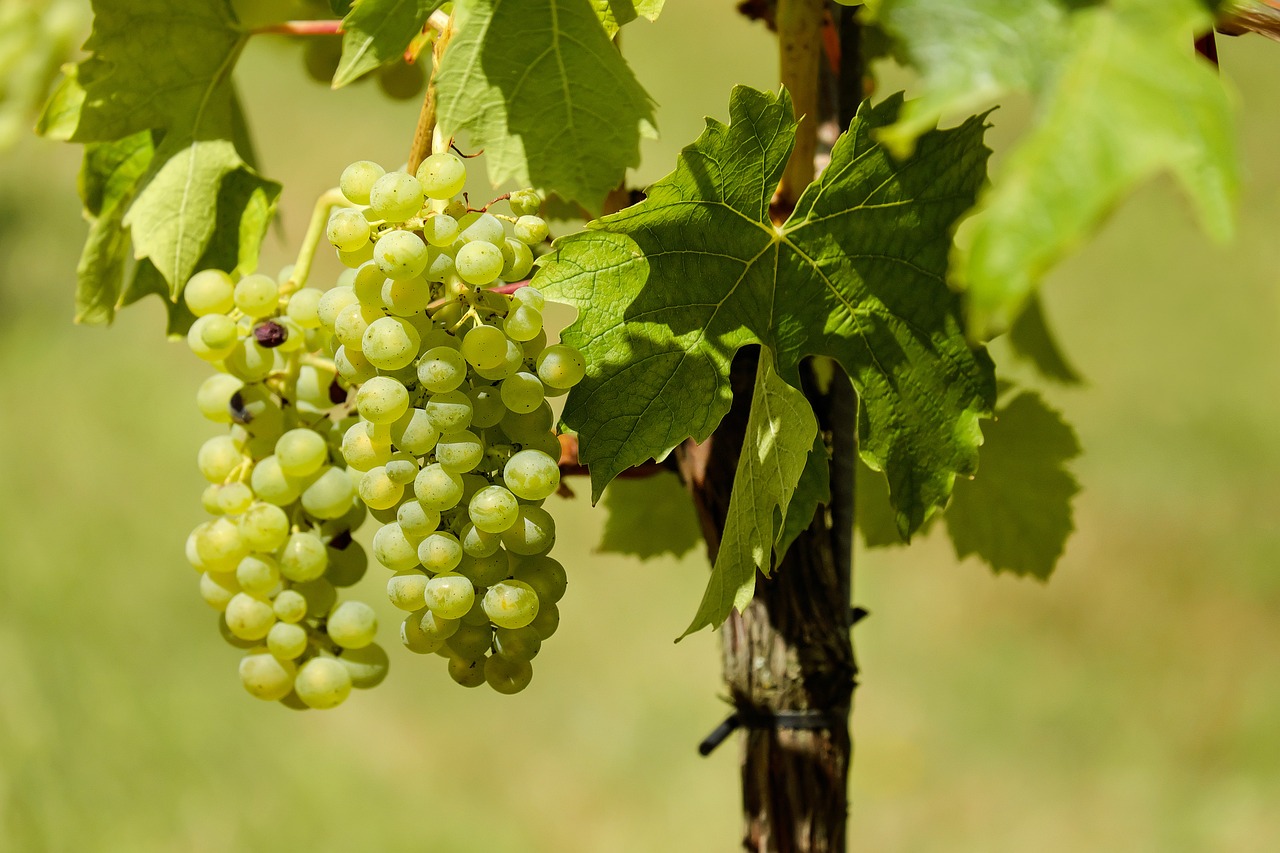
2.2 Pest and Disease Management
In the ever-evolving world of agriculture, the battle against pests and diseases is one that farmers have fought for centuries. However, with the advent of autonomous drones, this battle is taking a new turn, transforming how farmers approach pest control and disease management. These high-tech flying machines are not just for show; they are equipped with advanced sensors and imaging technology that allow them to identify issues in crops long before they become visible to the naked eye.
Imagine a drone soaring above a vast field, capturing high-resolution images and using sophisticated algorithms to analyze the data in real-time. This is not a scene from a science fiction movie; it is the reality of modern agriculture. Drones can detect subtle changes in plant health, such as variations in color or temperature, which often indicate the presence of pests or diseases. This capability allows farmers to take targeted action rather than relying on blanket pesticide applications that can harm beneficial insects and the environment.
One of the most significant advantages of using drones for pest and disease management is the ability to monitor large areas quickly and efficiently. Traditional methods of scouting fields can be time-consuming and labor-intensive, often leading to delayed responses to emerging threats. With drones, farmers can cover hundreds of acres in a fraction of the time, receiving immediate feedback on the health of their crops. This rapid assessment enables them to implement timely interventions, significantly improving the chances of saving affected plants before the problem escalates.
Moreover, the use of drones allows for precision agriculture, where interventions are tailored to specific areas of a field rather than applying treatments uniformly. For instance, if a drone identifies a localized outbreak of aphids in one section of a field, a farmer can apply targeted treatments only to that area. This approach not only saves money on pesticides but also minimizes environmental impact, promoting more sustainable farming practices.
Furthermore, the integration of machine learning and artificial intelligence into drone technology is paving the way for even more sophisticated pest management solutions. As drones collect and analyze data over time, they can learn to recognize patterns and predict potential outbreaks based on historical information. This predictive capability is invaluable, allowing farmers to be proactive rather than reactive in their pest management strategies.
However, while the benefits of using drones for pest and disease management are clear, there are also challenges to consider. Farmers must be trained to interpret the data collected by drones and integrate it into their existing practices. Additionally, the cost of acquiring and maintaining drone technology can be a barrier for some. Nevertheless, as technology continues to advance and become more accessible, the potential for drones to revolutionize pest and disease management in agriculture is undeniable.
In conclusion, autonomous drones are not just a passing trend; they are a game-changer in the fight against agricultural pests and diseases. By enabling farmers to monitor their crops more effectively and respond to threats with precision, drones are paving the way for a more sustainable and productive agricultural future.
- How do drones identify pests and diseases in crops?
Drones use advanced sensors and imaging technology to capture high-resolution images and analyze data in real-time, allowing them to detect changes in plant health that indicate pest or disease presence. - Are drones cost-effective for small-scale farmers?
While the initial investment can be significant, the long-term savings on pesticides and increased crop yields can make drones a cost-effective solution even for small-scale farmers. - What training is required to operate drones for agriculture?
Farmers typically need to undergo training in drone operation, data analysis, and integration of drone technology into their existing farming practices.

3. Delivery and Logistics
The landscape of delivery and logistics is undergoing a remarkable transformation, thanks to the rise of autonomous drones. Imagine a world where packages are delivered to your doorstep in a matter of minutes, bypassing the usual traffic snarls and delays. This isn't just a futuristic dream; it's quickly becoming a reality. Autonomous drones are set to revolutionize the way we think about shipping and delivery, providing a faster, more efficient alternative to traditional methods. They are not only changing the game for logistics companies but also enhancing the overall customer experience.
One of the most significant impacts of autonomous drones in this sector is the last-mile delivery solution. This is often the most challenging part of the delivery process, where packages must travel from a distribution center to the customer's home. Drones can navigate urban environments with ease, delivering packages directly to consumers without the need for a delivery truck. This not only cuts down on delivery times but also reduces traffic congestion and carbon emissions, making it a win-win for both businesses and the environment.
Major e-commerce companies are already integrating drone technology into their operations. For instance, consider the following benefits:
- Speed: Drones can significantly reduce delivery times, often completing deliveries in under 30 minutes.
- Cost-Effectiveness: By minimizing the need for delivery personnel and vehicles, companies can save on operational costs.
- Customer Satisfaction: Faster deliveries lead to happier customers, which can enhance brand loyalty and repeat business.
However, the potential of drones extends beyond mere package delivery. The concept of urban air mobility is gaining traction, where drones could serve as a solution to alleviate traffic congestion in densely populated cities. Imagine hopping on a drone taxi that whisks you above the gridlock, arriving at your destination in record time. This vision is not far-fetched; several companies are actively testing drone taxis, aiming to make urban air travel a part of our daily lives.
Despite the exciting prospects, there are challenges that need to be addressed. For instance, regulatory frameworks must evolve to accommodate the safe integration of drones into airspace already crowded with commercial and private aircraft. Safety protocols are paramount, and companies must work closely with aviation authorities to ensure that drone operations do not compromise public safety.
In summary, the impact of autonomous drones on delivery and logistics is profound. They promise to enhance efficiency, reduce costs, and improve customer satisfaction. As technology advances and regulations adapt, we can expect to see drones playing an increasingly vital role in how we receive goods, making the logistics of tomorrow not just faster, but smarter.
Q1: How do autonomous drones navigate urban environments?
A1: Autonomous drones use a combination of GPS, sensors, and advanced algorithms to navigate safely and efficiently through urban landscapes, avoiding obstacles and adhering to flight regulations.
Q2: What are the safety measures in place for drone deliveries?
A2: Safety measures include geo-fencing, which prevents drones from flying into restricted areas, as well as real-time monitoring and emergency protocols to handle any potential issues during delivery.
Q3: Are there any restrictions on where drones can deliver?
A3: Yes, drone deliveries are subject to regulations that vary by region. Drones typically cannot deliver in densely populated areas or near airports without specific permissions.
Q4: How does drone delivery affect traditional delivery jobs?
A4: While drone delivery may reduce the need for some traditional delivery roles, it also creates new job opportunities in drone maintenance, operation, and logistics management.
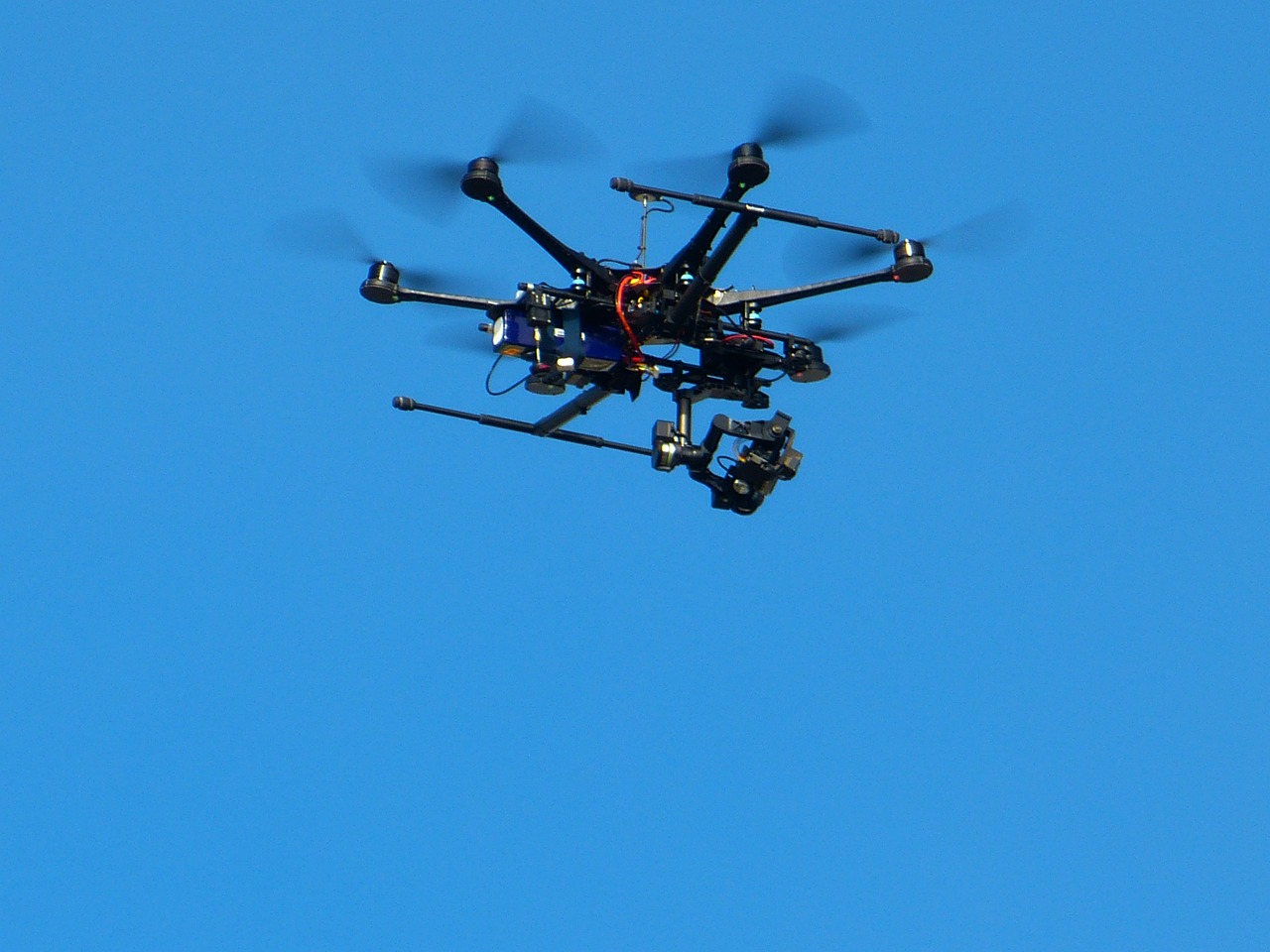
3.1 E-commerce Innovations
The rise of autonomous drones has ignited a revolution in the e-commerce sector, transforming the way products are delivered and fundamentally reshaping customer expectations. Imagine ordering your favorite gadget online and having it delivered to your doorstep within minutes, all thanks to a flying robot! This isn't just a futuristic dream; it's becoming a reality as major e-commerce companies invest heavily in drone technology.
One of the most exciting aspects of drone delivery is its potential to provide unmatched speed and efficiency. Traditional delivery methods often face roadblocks such as traffic congestion and weather conditions, but drones can soar above these obstacles. They can navigate directly to their destination, drastically reducing delivery times. For instance, companies like Amazon are already piloting drone delivery services that promise to cut down delivery times to as little as 30 minutes. This level of efficiency is not just a competitive advantage; it’s a game-changer for consumer satisfaction.
Moreover, the integration of drones into e-commerce logistics can lead to significant cost savings. By minimizing the need for delivery trucks and drivers, businesses can reduce operational costs. A study conducted by the Drone Industry Association estimates that the use of drones in delivery could save the logistics sector billions of dollars annually. This cost efficiency can be passed on to consumers, making products more affordable and accessible.
However, with great innovation comes great responsibility. Companies are faced with challenges regarding regulatory compliance and safety standards. Ensuring that drones operate safely in urban environments is crucial. This includes adhering to no-fly zones and avoiding populated areas to mitigate risks. E-commerce giants are actively collaborating with regulatory bodies to develop frameworks that ensure safe drone operations while pushing the boundaries of innovation.
Furthermore, the success of drone delivery hinges on public acceptance. Many consumers are excited about the convenience of drone deliveries, but there are also concerns regarding privacy and safety. To address these issues, companies are investing in community engagement initiatives. By informing the public about how drones work and the safety measures in place, they aim to foster a positive perception of this technology.
In summary, the innovations brought about by autonomous drones in the e-commerce industry are nothing short of transformative. As we look to the future, we can expect to see:
- Faster delivery times that enhance customer satisfaction.
- Cost savings that benefit both businesses and consumers.
- Collaborations with regulatory bodies to ensure safety and compliance.
- Community engagement efforts to build trust and acceptance.
As these innovations continue to unfold, the e-commerce landscape will undoubtedly evolve, paving the way for a new era of shopping that is faster, cheaper, and more efficient than ever before.
Q1: How do drones ensure the safety of deliveries?
A1: Drones are equipped with advanced navigation systems that allow them to avoid obstacles and adhere to safety regulations. They also undergo rigorous testing to ensure they operate safely in various environments.
Q2: What types of products can be delivered by drones?
A2: Drones can deliver a wide range of products, including small electronics, groceries, pharmaceuticals, and even documents, as long as they meet weight and size restrictions.
Q3: Are there any privacy concerns related to drone deliveries?
A3: Yes, privacy is a significant concern. Companies are working on implementing measures to minimize privacy risks, such as limiting the areas where drones can operate and ensuring they do not capture unnecessary footage.
Q4: When can we expect widespread drone delivery services?
A4: While some companies are already piloting drone delivery services, widespread adoption will depend on regulatory approvals, technological advancements, and public acceptance. We may see more extensive use within the next few years.
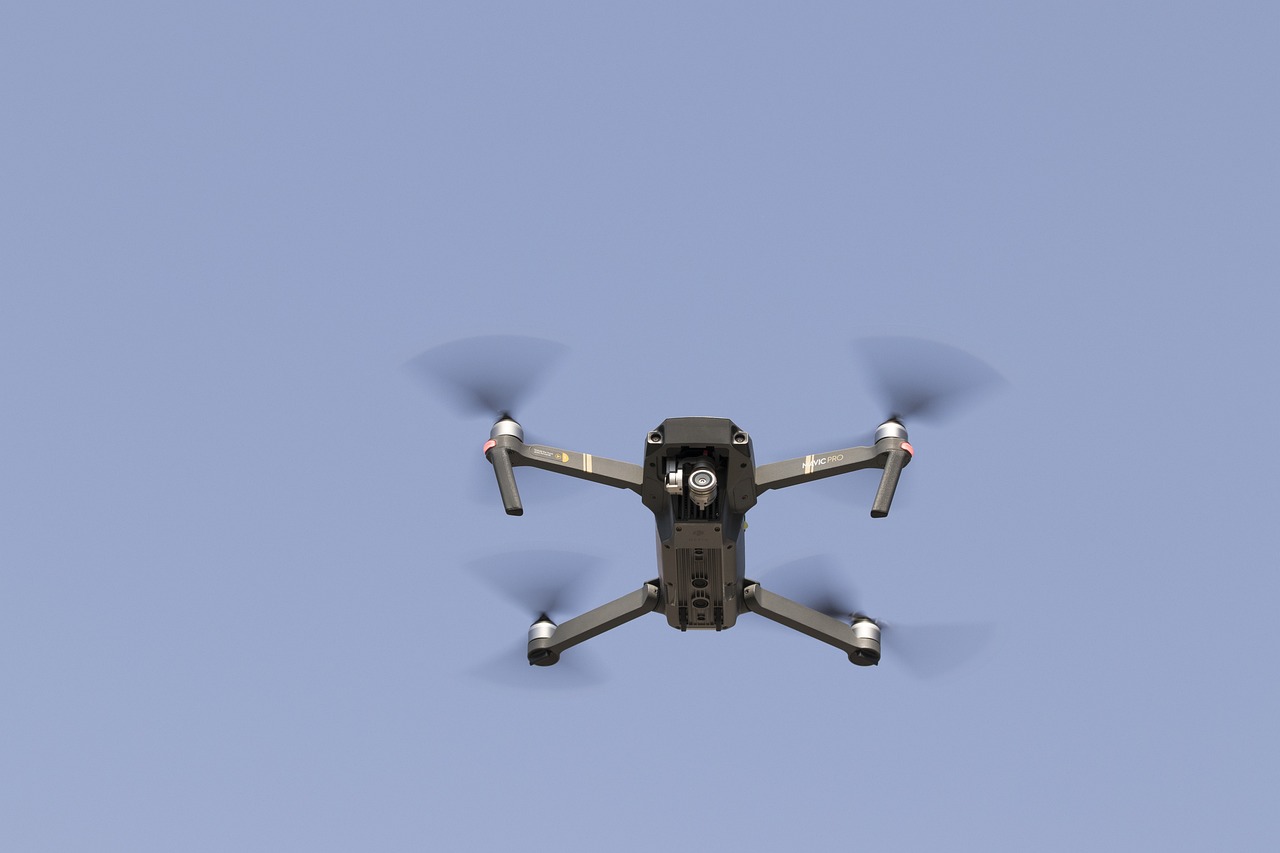
3.2 Urban Air Mobility
Imagine a world where your daily commute involves soaring above the congested streets, bypassing traffic jams effortlessly. This is not just a futuristic dream; it's the emerging reality of Urban Air Mobility (UAM). As cities become increasingly crowded and the demand for faster transportation options grows, autonomous drones are stepping in to revolutionize urban travel. These flying vehicles promise to reduce travel times significantly and enhance the overall efficiency of our transportation networks.
Urban Air Mobility encompasses a range of applications, primarily focusing on passenger transport and cargo delivery within urban environments. The technology behind these drones is rapidly evolving, with advancements in battery life, navigation systems, and safety protocols. These innovations are paving the way for a new era of transportation, where drones can operate safely alongside traditional vehicles.
One of the most exciting aspects of UAM is its potential to alleviate traffic congestion. According to recent studies, urban traffic congestion costs cities billions of dollars each year in lost productivity and increased emissions. By utilizing the airspace above our heads, we can significantly reduce the number of vehicles on the road. For instance, a drone capable of carrying passengers could potentially replace multiple cars, leading to a more streamlined urban environment.
However, the implementation of UAM is not without its challenges. Safety concerns, regulatory hurdles, and public acceptance are critical factors that need to be addressed. To ensure the successful integration of drones into our cities, it is essential to develop comprehensive regulations that prioritize safety while fostering innovation. Additionally, public perception plays a crucial role; educating communities about the benefits of UAM can help alleviate fears and encourage acceptance.
As we look to the future, the concept of Urban Air Mobility is expected to evolve rapidly. Major tech companies and startups are investing heavily in developing the infrastructure necessary for UAM, including vertiports—designated landing zones for drones. These facilities will be strategically located throughout urban areas, making it convenient for passengers to access aerial transportation. The potential for UAM extends beyond just passenger transport; it also includes logistics and delivery services, which could transform how goods are transported within cities.
In summary, Urban Air Mobility is set to redefine urban transportation by offering a viable solution to traffic congestion and enhancing the efficiency of travel. As technology continues to advance and regulatory frameworks are established, we can anticipate a future where autonomous drones become a common sight in our skies, providing a fast, safe, and efficient means of transportation.
- What is Urban Air Mobility? - Urban Air Mobility refers to the use of autonomous drones for passenger and cargo transport within urban environments.
- How can UAM reduce traffic congestion? - By utilizing airspace for transportation, UAM can decrease the number of vehicles on the road, leading to less congestion.
- What are the challenges facing Urban Air Mobility? - Key challenges include safety concerns, regulatory hurdles, and the need for public acceptance.
- What is a vertiport? - A vertiport is a designated landing zone for drones, designed to facilitate Urban Air Mobility.

4. Emergency Services and Disaster Relief
The role of autonomous drones in emergency services and disaster relief is nothing short of revolutionary. Imagine a scenario where natural disasters strike—earthquakes, floods, or wildfires. In these critical moments, every second counts, and autonomous drones can be the difference between life and death. Equipped with advanced sensors and real-time data processing capabilities, these flying machines are transforming the way we respond to emergencies.
One of the most impactful applications of drones in emergency situations is in search and rescue operations. When people go missing in challenging terrains, such as dense forests or mountainous areas, traditional search methods can be slow and cumbersome. Drones can cover vast areas quickly, providing aerial views that allow rescue teams to locate individuals much faster. For instance, a drone can be deployed to scan a search area, using thermal imaging to detect body heat, which is particularly useful during nighttime operations.
Moreover, drones can assist in disaster assessment following a calamity. After an earthquake, for example, assessing the extent of damage is crucial for effective recovery efforts. Drones can fly over affected areas, capturing high-resolution images and collecting data on structural damage, which can be analyzed to prioritize rescue and recovery operations. This capability not only speeds up the assessment process but also ensures that resources are allocated efficiently. The table below illustrates some of the key advantages of using drones in emergency services:
| Advantages of Drones in Emergency Services | Description |
|---|---|
| Speed | Drones can quickly cover large areas, providing real-time data and imagery. |
| Accessibility | They can reach hard-to-access locations that may be dangerous for human responders. |
| Cost-Effectiveness | Using drones can reduce costs associated with manned aircraft and ground search teams. |
| Data Collection | Equipped with various sensors, drones can gather valuable data for analysis. |
In addition to search and rescue and damage assessment, drones are also being utilized to deliver medical supplies to areas that are hard to reach, especially in the aftermath of a disaster. For instance, during a flood, roads may be impassable, but drones can fly over water and deliver essential supplies like medications, vaccines, and first-aid kits directly to those in need. This capability not only saves lives but also enhances the effectiveness of disaster response efforts.
As we look to the future, the integration of autonomous drones into emergency services will likely expand. With advancements in artificial intelligence and machine learning, drones will become even more capable of making real-time decisions, adapting to changing environments, and autonomously navigating complex situations. This evolution will further solidify their role as indispensable tools in emergency response and disaster relief.
- How do drones find missing persons? Drones equipped with thermal imaging and GPS can quickly search large areas and detect body heat, making them effective in locating missing individuals.
- Can drones deliver medical supplies during disasters? Yes, drones can transport medical supplies to areas that are inaccessible due to damage or flooding, ensuring timely delivery of essential items.
- What are the safety measures for using drones in emergencies? Operators must follow strict safety protocols, including maintaining visual line-of-sight, avoiding populated areas, and ensuring that drones are equipped with fail-safe systems.
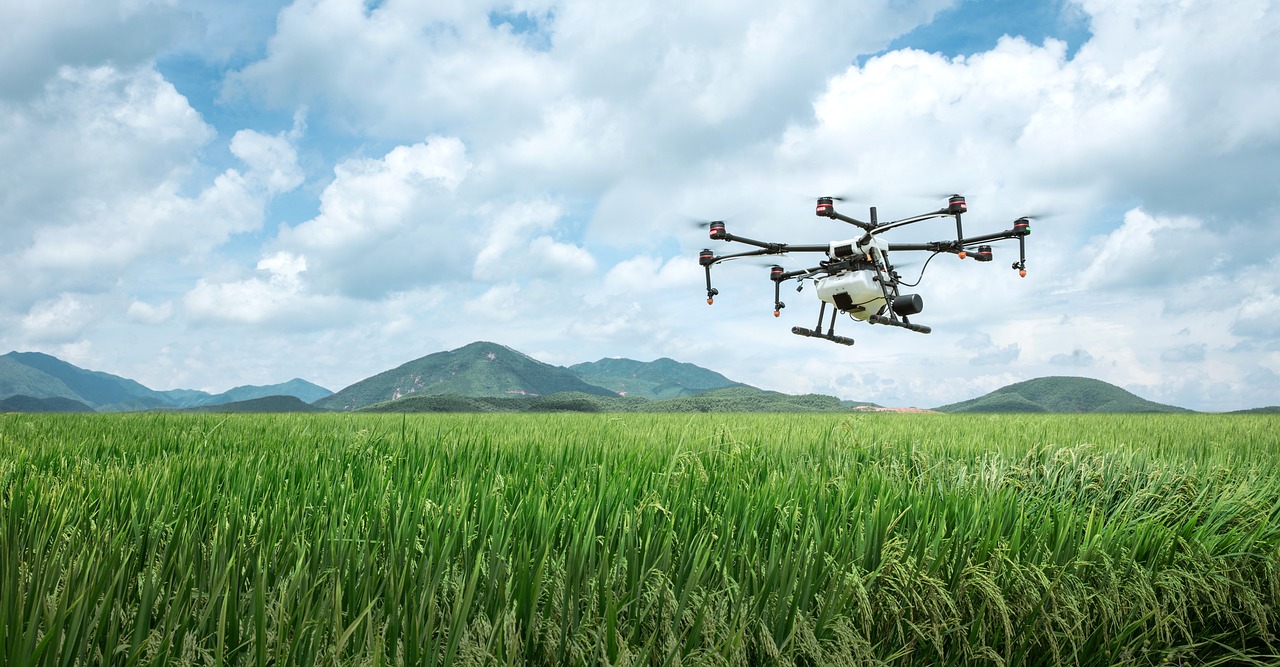
4.1 Search and Rescue Operations
When it comes to search and rescue operations, time is often the most critical factor. Imagine a scenario where a hiker goes missing in a dense forest or a boat capsizes in a vast ocean. In such situations, every second counts, and this is where autonomous drones emerge as game-changers. Equipped with advanced sensors and real-time data transmission capabilities, these drones can cover large areas quickly, providing crucial information to rescue teams.
One of the standout features of autonomous drones is their ability to operate in challenging terrains and conditions that might be hazardous for human rescuers. For instance, during a natural disaster, like an earthquake or flood, accessing certain areas can be nearly impossible. Drones can fly over these obstacles, capturing high-resolution images and videos that help in assessing the situation on the ground. This capability not only speeds up the search process but also enhances the safety of rescue personnel.
Moreover, the integration of thermal imaging technology allows drones to detect body heat, making it easier to locate missing individuals, even in low visibility conditions such as at night or in dense fog. This technology is particularly beneficial in search and rescue missions for lost hikers or victims of natural disasters. Drones equipped with thermal sensors can identify heat signatures, guiding rescue teams to the exact location of those in need.
Additionally, drones can be deployed to deliver essential supplies, such as food, water, or medical kits, directly to individuals stranded in remote locations. This capability can be lifesaving, especially in situations where conventional transport methods are rendered ineffective. For example, a drone can quickly drop a first aid kit to an injured person waiting for help, significantly increasing their chances of survival.
As we look to the future, the potential of autonomous drones in search and rescue operations is only set to expand. With advancements in artificial intelligence and machine learning, these drones will become even more adept at navigating complex environments and making real-time decisions. Imagine a drone that not only assists in locating individuals but also analyzes the safest routes for rescue teams to take based on the terrain and environmental conditions.
In conclusion, the integration of autonomous drones into search and rescue operations represents a significant leap forward in emergency response capabilities. Their ability to operate quickly, efficiently, and safely in challenging conditions makes them invaluable tools in saving lives. As technology continues to evolve, we can expect even greater enhancements in their functionality, ensuring that when disaster strikes, help is just a drone flight away.
- How do drones locate missing persons? Drones use advanced sensors and thermal imaging technology to detect heat signatures, allowing them to locate individuals even in challenging conditions.
- Can drones operate in bad weather? While many drones are designed to withstand various weather conditions, extreme weather may limit their operational capabilities. However, advancements are continuously being made to improve their resilience.
- What types of supplies can drones deliver during rescue missions? Drones can deliver a variety of supplies, including food, water, medical kits, and communication devices, directly to individuals in need.
- Are there any legal restrictions on using drones for search and rescue? Yes, regulations vary by region. It is essential for rescue organizations to comply with local laws regarding drone operations.
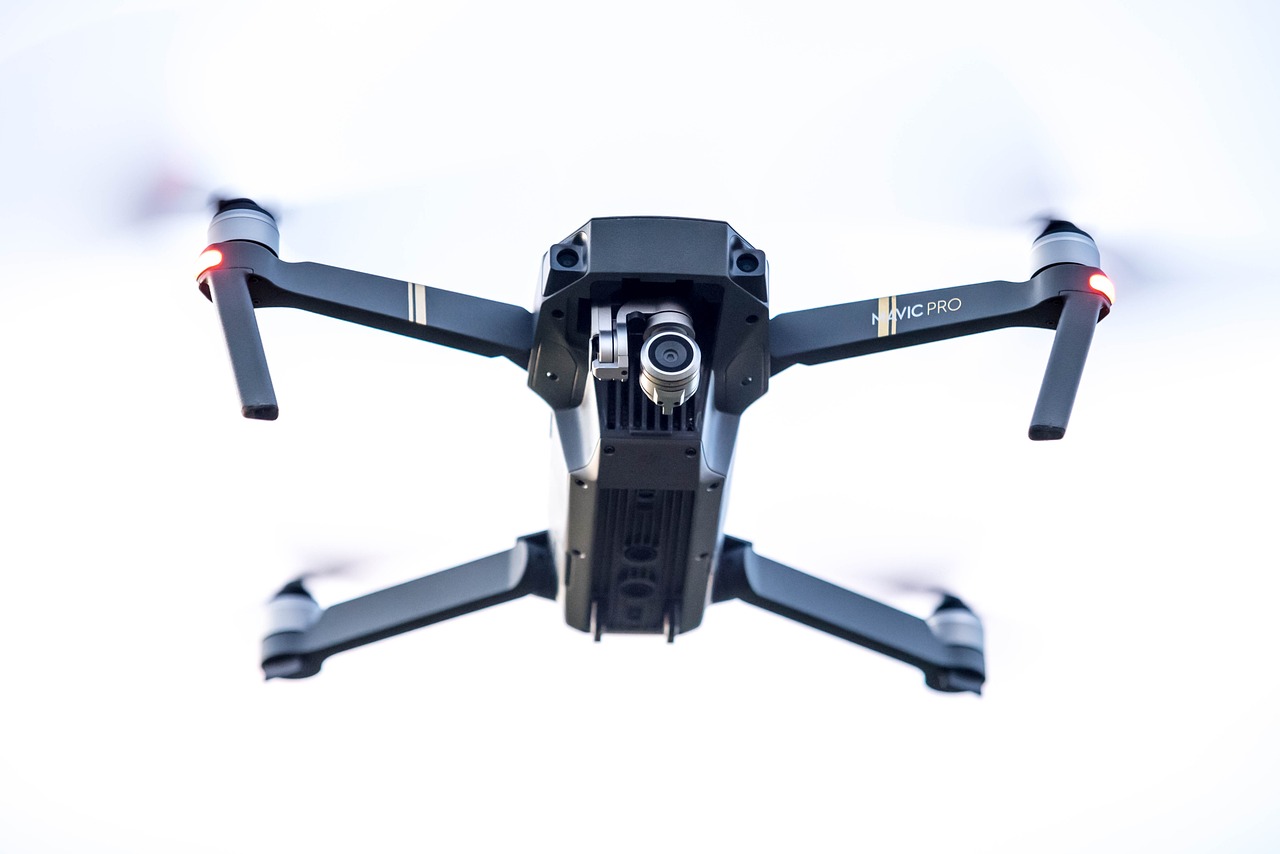
4.2 Disaster Assessment
In the aftermath of a natural disaster, timely and accurate information is crucial for effective recovery efforts. This is where autonomous drones shine, acting as the eyes in the sky that can quickly assess damage and provide real-time data to emergency responders. Imagine a scenario where a hurricane has just swept through a coastal town. Traditional methods of damage assessment, which often involve sending teams into potentially dangerous areas, can be slow and risky. Drones, on the other hand, can soar above the chaos, capturing high-resolution images and videos that reveal the extent of destruction.
One of the remarkable features of these drones is their ability to cover large areas in a short amount of time. Equipped with advanced sensors and imaging technology, they can create detailed maps and 3D models of the affected regions. This information is invaluable for emergency management teams as they strategize their response. For instance, drones can help identify:
- Structural damage to buildings and infrastructure, allowing for prioritization of rescue efforts.
- Blocked roads and access points, facilitating better logistics for aid delivery.
- Areas in need of immediate medical attention or support, ensuring that resources are allocated efficiently.
Furthermore, drones can operate in environments that are hazardous or inaccessible to humans. Whether it's navigating through debris in a flooded area or surveying a wildfire's aftermath, these flying machines can gather critical data without putting lives at risk. This capability not only enhances the safety of rescue workers but also accelerates the overall recovery process.
As we look to the future, the integration of artificial intelligence into drone technology promises even greater advancements. AI can assist drones in analyzing the data they collect, identifying patterns and areas of concern that may require immediate intervention. For example, an AI-powered drone could automatically flag buildings that have sustained significant damage, allowing teams to focus their efforts where they are needed most.
In summary, the role of autonomous drones in disaster assessment is transforming the way we respond to emergencies. By providing rapid, accurate, and comprehensive data, they enable emergency services to act swiftly and effectively, ultimately saving lives and resources. As technology continues to evolve, we can expect drones to become an even more integral part of our disaster response toolkit.
- How do autonomous drones assess damage after a disaster?
Drones equipped with cameras and sensors fly over affected areas to capture images and data, which is then analyzed to determine the extent of damage. - Are drones safe to use in disaster zones?
Yes, drones can operate in hazardous environments, reducing the risk to human responders while providing critical information. - Can drones help in delivering relief supplies?
Absolutely! Drones can transport small packages of medical supplies and food to areas that are difficult to reach by traditional means. - What technology do drones use for navigation during disaster assessments?
Drones typically use GPS and advanced navigation systems, including obstacle avoidance technology, to safely navigate through challenging environments.
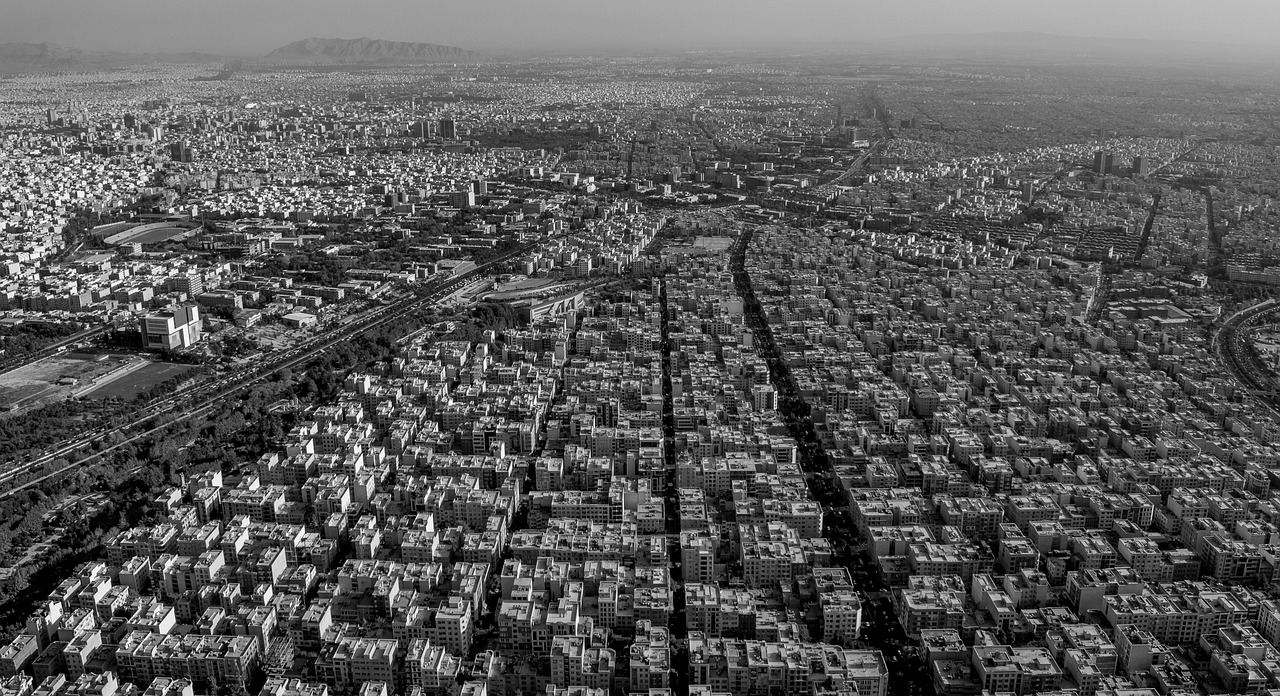
5. Environmental Monitoring
As our planet faces significant environmental challenges, the role of autonomous drones in environmental monitoring has never been more crucial. These flying marvels are equipped with advanced sensors and imaging technology, allowing them to collect vital data on a scale and precision that was previously unimaginable. From tracking wildlife populations to assessing pollution levels, drones are transforming how we understand and protect our natural world.
One of the most exciting applications of drones in environmental monitoring is in wildlife conservation. Drones can cover vast areas of land, making it easier to track endangered species and monitor their habitats without disturbing them. For instance, researchers can deploy drones equipped with thermal imaging cameras to locate animals in dense forests or rugged terrains. This capability not only aids in understanding animal behaviors but also helps in planning effective conservation strategies.
Moreover, drones are proving to be invaluable in pollution monitoring. They can fly over industrial sites, urban areas, and water bodies to detect and measure pollutants. Equipped with gas sensors and cameras, drones can identify sources of air and water pollution, providing data that is critical for regulatory compliance and environmental protection. This real-time data collection enables faster responses to environmental hazards, ensuring that necessary actions can be taken before situations escalate.
To illustrate the impact of drones in environmental monitoring, consider the following table showcasing various applications and their benefits:
| Application | Benefits |
|---|---|
| Wildlife Tracking | Non-invasive monitoring, improved data accuracy, conservation planning |
| Pollution Assessment | Real-time data collection, early hazard detection, regulatory compliance |
| Forest Management | Health assessments, fire risk evaluation, resource management |
| Climate Change Studies | Data on carbon emissions, temperature changes, habitat shifts |
As we move forward, the integration of machine learning and AI technologies into drone systems will further enhance their capabilities. Imagine drones that can analyze data as they collect it, identifying trends and anomalies in real-time. This could revolutionize how scientists and environmentalists approach conservation and pollution issues.
However, while the potential is vast, it's essential to consider the ethical implications of drone usage in environmental monitoring. The data collected must be handled responsibly, ensuring that it benefits conservation efforts without infringing on privacy or disrupting ecosystems. Engaging with local communities and stakeholders is crucial to build trust and ensure that drone initiatives align with broader environmental goals.
- How do drones help in wildlife conservation? Drones can track and monitor wildlife populations without disturbing their natural habitats, providing critical data for conservation efforts.
- Can drones detect pollution? Yes, drones equipped with specialized sensors can measure air and water quality, helping identify pollution sources and assess environmental health.
- What are the limitations of using drones for environmental monitoring? Some limitations include battery life, regulatory restrictions, and the need for skilled operators to analyze the data collected.
- How accurate is the data collected by drones? The accuracy can be very high, depending on the sensors used and the calibration of the equipment, often surpassing traditional monitoring methods.
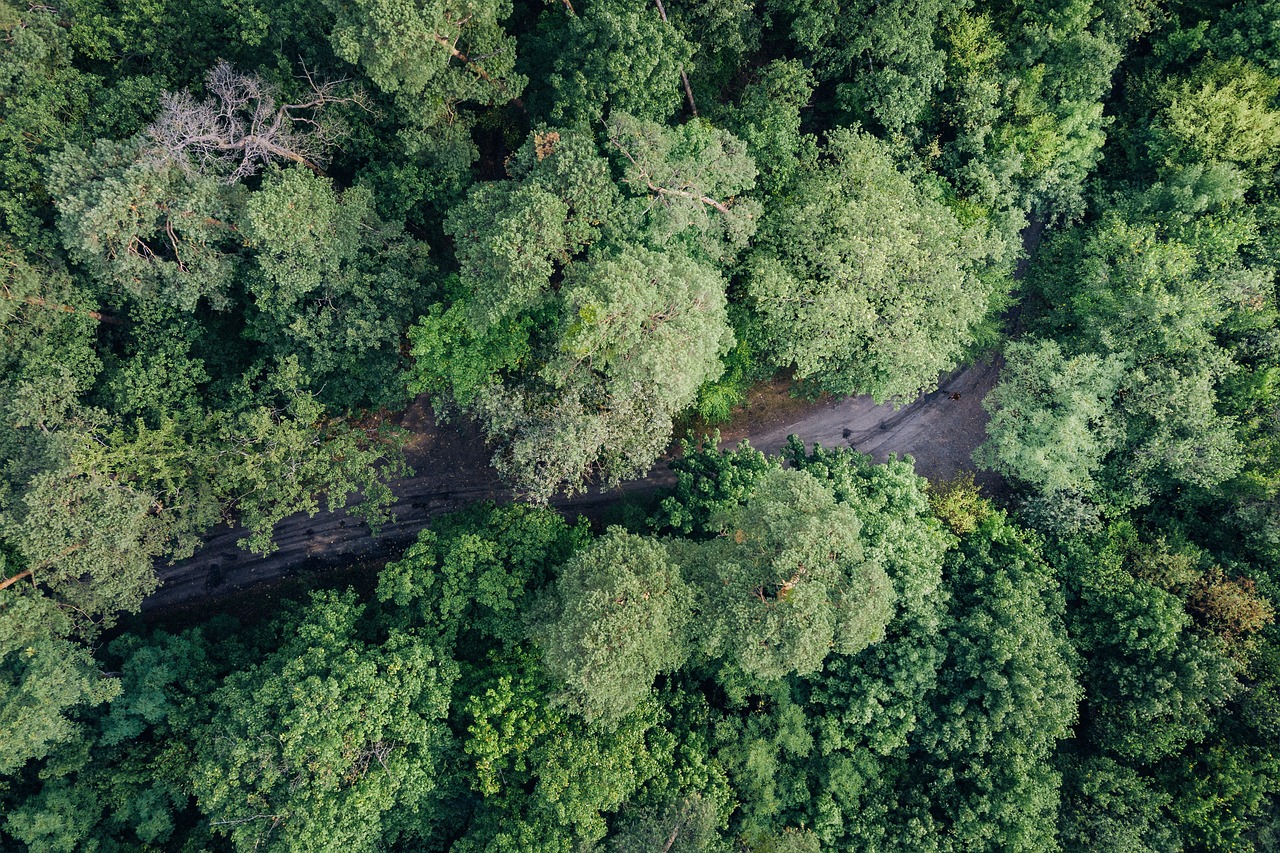
5.1 Wildlife Conservation
In recent years, the role of autonomous drones in wildlife conservation has emerged as a groundbreaking advancement, providing innovative solutions to age-old challenges. These drones are not just flying machines; they are equipped with sophisticated technology that allows for detailed monitoring of wildlife and their habitats. Imagine a vast forest where endangered species roam, but the threats they face—from poaching to habitat destruction—are often hidden from view. Drones swoop in, capturing high-resolution images and data that help conservationists make informed decisions.
One of the most significant benefits of using drones in wildlife conservation is their ability to cover large areas quickly and efficiently. Traditional methods of monitoring wildlife, such as on-foot surveys or manned aircraft, can be time-consuming and costly. Drones, on the other hand, can fly over difficult terrain, providing real-time data that is crucial for tracking animal movements and behaviors. This capability is particularly vital for endangered species, as timely information can lead to immediate action against threats.
Moreover, drones can be equipped with various sensors, including thermal imaging and multispectral cameras, allowing them to detect animals even in dense vegetation or during nighttime. This technology not only enhances the accuracy of wildlife counts but also assists in understanding animal health and habitat use. For instance, researchers can assess the impact of climate change on specific species by analyzing shifts in their habitats over time, all thanks to the aerial perspective that drones provide.
To illustrate the impact of drones on wildlife conservation, consider the following applications:
- Monitoring Endangered Species: Drones can track the movements of endangered animals like rhinos or tigers without disturbing their natural behaviors.
- Anti-Poaching Efforts: Equipped with thermal cameras, drones can detect poachers at night, allowing for rapid response from park rangers.
- Habitat Mapping: Drones can create detailed maps of ecosystems, helping conservationists understand and protect critical habitats.
As we look to the future, the integration of artificial intelligence with drone technology promises even greater advancements. AI can analyze the data collected by drones, identifying patterns and trends that human researchers might overlook. This synergy between technology and conservation efforts not only boosts efficiency but also enhances the effectiveness of initiatives aimed at preserving our planet's biodiversity.
In conclusion, the deployment of autonomous drones in wildlife conservation is a prime example of how technology can be harnessed for the greater good. By providing critical insights and enabling proactive measures, drones are transforming the way we approach conservation. As we continue to face environmental challenges, these flying allies may very well be the key to ensuring a sustainable future for wildlife and their habitats.
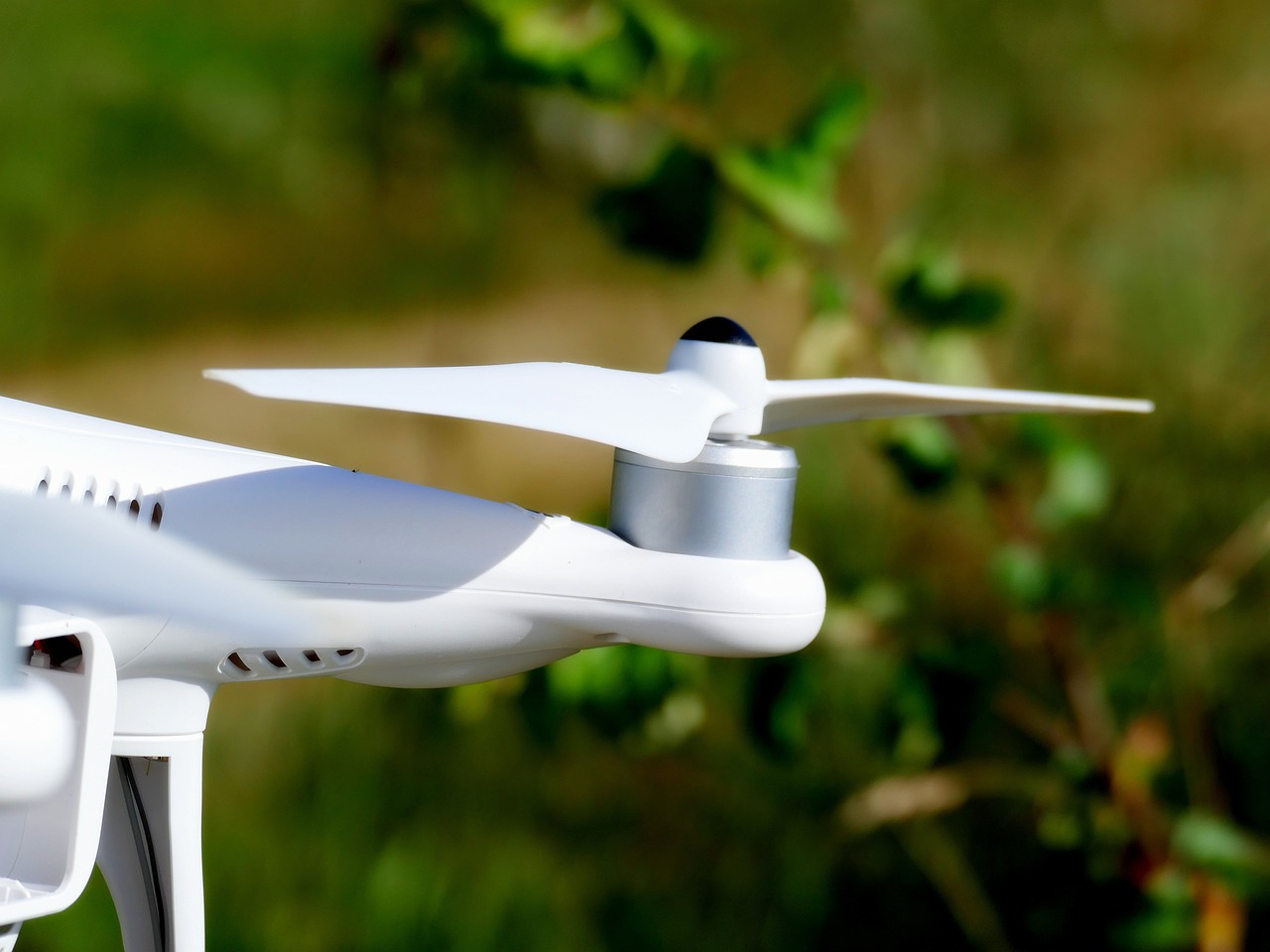
5.2 Pollution Monitoring
In our rapidly industrializing world, pollution has become a significant concern, affecting air quality, water resources, and overall environmental health. Autonomous drones are stepping up to the plate, offering innovative solutions for pollution monitoring. These flying marvels are equipped with advanced sensors and imaging technology, allowing them to collect data from areas that are often hard to reach or hazardous for humans.
One of the key advantages of using drones for pollution monitoring is their ability to cover large areas quickly and efficiently. Traditional methods of monitoring often rely on stationary sensors or manual sampling, which can be time-consuming and limited in scope. In contrast, drones can fly over vast regions, capturing real-time data on pollution levels and providing a comprehensive view of environmental conditions.
For instance, in urban areas, drones can be deployed to measure air quality by detecting harmful gases such as carbon monoxide, nitrogen dioxide, and particulate matter. This data is crucial for understanding pollution hotspots and can help local authorities implement measures to improve air quality. Similarly, drones can monitor water bodies, detecting pollutants and harmful substances that may threaten aquatic life and human health.
Moreover, the integration of AI and machine learning technologies enhances the capabilities of autonomous drones in pollution monitoring. These systems can analyze the collected data in real time, identifying patterns and predicting potential pollution events before they escalate. For example, if a drone detects an unusual spike in pollution levels at a specific location, it can alert authorities immediately, allowing for swift action to mitigate the problem.
To illustrate the effectiveness of drone technology in pollution monitoring, consider the following table that summarizes key applications and their impacts:
| Application | Description | Impact |
|---|---|---|
| Air Quality Monitoring | Drones equipped with air sensors measure pollutants in real-time. | Improved public health and informed policy-making. |
| Water Quality Assessment | Drones collect water samples and analyze for contaminants. | Protection of aquatic ecosystems and human health. |
| Wildlife Protection | Monitoring habitats for pollutants that affect endangered species. | Enhanced conservation efforts and biodiversity protection. |
As we look to the future, the role of autonomous drones in pollution monitoring is set to expand. With advancements in technology, we can expect these drones to become even more sophisticated, capable of detecting a wider range of pollutants and providing more accurate data. This evolution not only empowers environmental agencies but also raises public awareness about pollution issues, ultimately leading to a more proactive approach to environmental conservation.
In conclusion, the integration of autonomous drones into pollution monitoring represents a significant leap forward in our ability to understand and combat environmental challenges. Their efficiency, adaptability, and real-time data collection capabilities make them invaluable tools in the fight against pollution, paving the way for a cleaner, healthier planet.
- How do drones monitor pollution? Drones use sensors and cameras to collect data on air and water quality, measuring pollutants in real-time.
- What are the benefits of using drones for pollution monitoring? Drones can cover large areas quickly, provide real-time data, and access hard-to-reach locations, making them more effective than traditional methods.
- Can drones help in emergency pollution situations? Yes, drones can quickly assess pollution levels during emergencies, helping authorities respond more effectively.

6. Regulatory Challenges
As the world embraces the rapid advancements in autonomous drone technology, a myriad of regulatory challenges arises. These challenges are not just technical but also ethical, social, and legal in nature. The deployment of autonomous drones across various sectors raises questions about safety, privacy, and the need for comprehensive regulations. Without a robust regulatory framework, the potential benefits of drone technology may be overshadowed by public concerns and safety risks.
One major area of concern is safety. Autonomous drones operate in shared airspace, which includes commercial flights, private aircraft, and even pedestrians on the ground. The risk of mid-air collisions or accidents due to malfunctioning systems is a pressing issue that regulators must address. Ensuring that drones can operate safely alongside traditional aircraft requires rigorous testing and adherence to strict safety protocols. This includes the development of advanced collision avoidance systems and fail-safe mechanisms that can prevent catastrophic failures.
Privacy is another significant regulatory challenge. As drones become more capable of capturing high-resolution images and data from above, the potential for invasive surveillance increases. Communities are understandably concerned about being monitored without consent, leading to a demand for clear guidelines that protect individual privacy rights. Regulatory bodies must find a balance between the benefits of data collection for purposes like environmental monitoring and the rights of citizens to privacy. This could involve implementing strict data protection laws that govern how drone-collected data is used, stored, and shared.
Moreover, the regulatory landscape is complicated by the fact that different countries have varying laws regarding drone operations. For instance, while the Federal Aviation Administration (FAA) in the United States has established guidelines for commercial drone use, other countries may have more lenient or stringent regulations. This disparity creates challenges for companies operating internationally, as they must navigate a patchwork of regulations that can hinder innovation and deployment. To illustrate this complexity, consider the following table:
| Country | Regulatory Body | Key Regulations |
|---|---|---|
| United States | FAA | Part 107 for commercial use; Remote ID requirements |
| European Union | European Union Aviation Safety Agency (EASA) | Unified regulations across member states; risk-based categorization |
| Australia | Civil Aviation Safety Authority (CASA) | Specific licenses for commercial drone operations; safety management systems |
In light of these challenges, the need for a unified international framework becomes apparent. This framework would help standardize regulations and promote safe drone operations globally. Collaborative efforts between countries, industry stakeholders, and regulatory bodies are essential to create guidelines that address safety, privacy, and operational efficiency.
As we look to the future, it’s crucial for regulators to engage with the public and industry experts to develop policies that not only foster innovation but also protect communities and the environment. By addressing these regulatory challenges head-on, we can pave the way for the responsible integration of autonomous drones into our daily lives, ensuring that their potential is realized without compromising safety or privacy.
- What are the main regulatory challenges facing autonomous drones?
The main challenges include safety concerns, privacy issues, and the need for a unified international regulatory framework.
- How do different countries regulate drone operations?
Regulations vary significantly, with some countries having strict guidelines while others are more lenient, creating challenges for international operations.
- Why is public engagement important in drone regulations?
Public engagement helps ensure that regulations reflect community concerns and foster trust in drone technology.
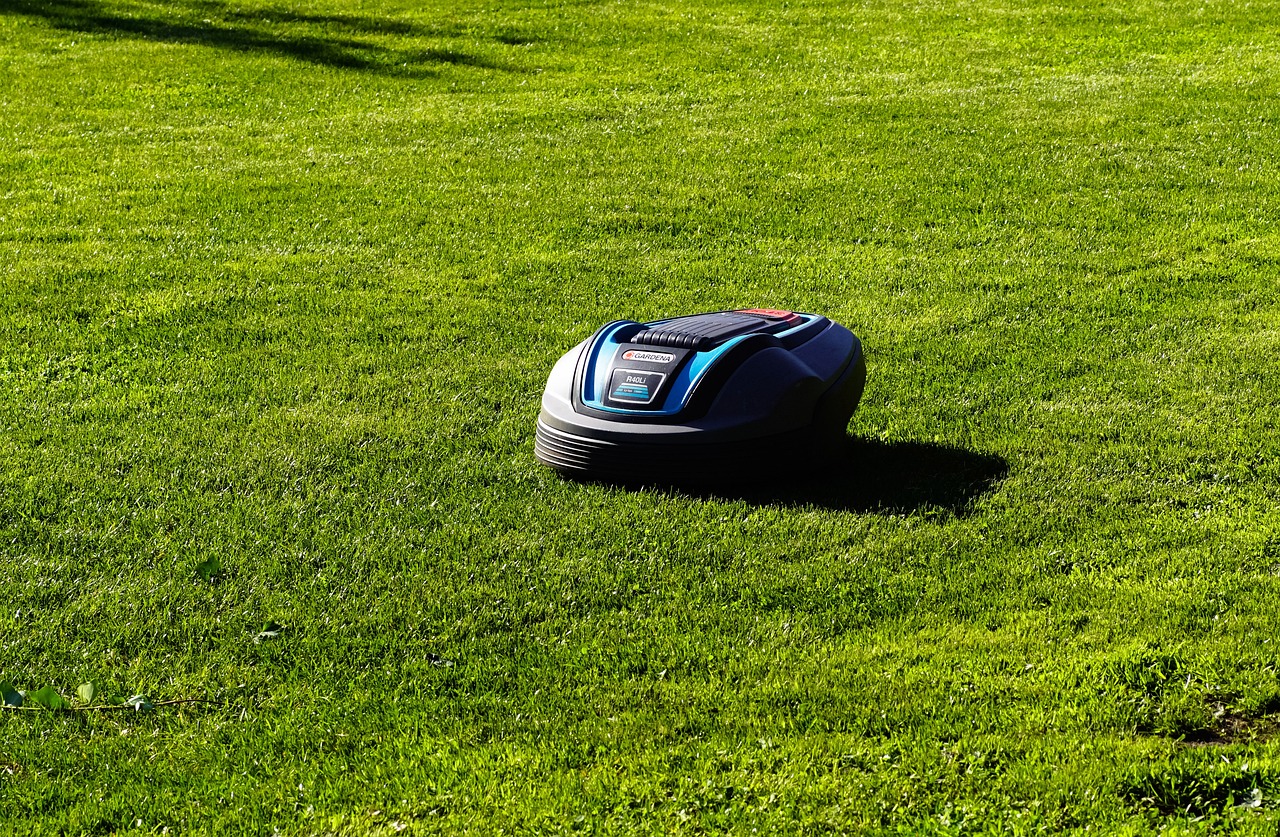
6.1 Safety and Privacy Concerns
As the use of autonomous drones becomes more prevalent, the conversation around safety and privacy concerns grows louder. Imagine a world where drones buzz overhead, delivering packages, monitoring crops, or assisting in emergency situations. While this sounds futuristic and exciting, it also raises critical questions about how these flying machines interact with our daily lives. Are they safe? Can they invade our privacy? These are not just hypothetical concerns; they are real issues that need addressing as we move forward with drone technology.
Safety is paramount when it comes to autonomous drones. Incidents involving drones colliding with manned aircraft, crashing into buildings, or causing injuries to people on the ground have sparked debates about the need for stringent regulations. To mitigate these risks, several measures can be implemented:
- Robust Training Programs: Operators must undergo comprehensive training to understand drone functionalities and emergency protocols.
- Advanced Navigation Systems: Incorporating sophisticated navigation technologies can help drones avoid obstacles and ensure safe flight paths.
- Regular Maintenance Checks: Like any vehicle, drones require regular maintenance to ensure their components are functioning correctly.
On the other hand, privacy concerns are equally pressing. Drones equipped with high-resolution cameras and sensors can easily capture images and data without individuals' consent. This capability can lead to unauthorized surveillance and data collection, raising ethical questions about personal privacy. To address these concerns, it's crucial to implement strict guidelines regarding where and how drones can operate. Some potential solutions include:
- Geofencing: Establishing no-fly zones over sensitive areas like schools, hospitals, and private properties.
- Data Protection Regulations: Enforcing laws that dictate how data collected by drones can be used, stored, and shared.
- Public Awareness Campaigns: Educating the public about drone operations and their rights regarding privacy.
In conclusion, while the benefits of autonomous drones are immense, navigating the challenges of safety and privacy is essential for their successful integration into society. As technology evolves, so too must our regulations and public awareness, ensuring that we can enjoy the advantages of drones without compromising our safety or privacy.
Q1: What are the main safety concerns regarding autonomous drones?
A1: The primary safety concerns include potential collisions with manned aircraft, crashes that could injure people on the ground, and the reliability of drone technology in various weather conditions.
Q2: How can privacy be protected when using drones?
A2: Privacy can be protected through geofencing, strict data protection regulations, and public awareness campaigns that inform people about their rights regarding drone surveillance.
Q3: Are there regulations in place for drone operations?
A3: Yes, there are various regulations in place, but they can vary significantly by country and region. Continuous updates and new frameworks are needed to keep pace with advancements in drone technology.

6.2 International Regulations
The landscape of international regulations surrounding autonomous drones is as complex as it is crucial. With the rapid advancement of drone technology, countries around the globe are scrambling to establish frameworks that ensure safety, privacy, and efficiency. However, these regulations often vary significantly from one nation to another, leading to a patchwork of rules that can be confusing for manufacturers, operators, and users alike.
For instance, in the United States, the Federal Aviation Administration (FAA) has set forth regulations that govern the operation of drones, requiring operators to obtain a Remote Pilot Certificate and adhere to specific flight rules. In contrast, the European Union has implemented a more unified approach with the European Union Aviation Safety Agency (EASA) overseeing drone operations across member states. This difference in regulatory approach highlights the need for international cooperation and harmonization of drone laws.
Furthermore, the regulatory challenges are compounded by the need to address safety concerns and privacy implications. As drones become more integrated into everyday life, issues such as airspace congestion, potential collisions, and unauthorized surveillance have emerged as significant concerns. Countries must navigate these challenges while also considering the economic benefits that drone technology can bring, such as enhanced logistics and improved emergency response capabilities.
To facilitate a better understanding of the differences in drone regulations across various regions, the following table summarizes key regulatory aspects from selected countries:
| Country | Regulatory Body | Key Regulations |
|---|---|---|
| United States | Federal Aviation Administration (FAA) | Remote Pilot Certificate, Part 107 Regulations |
| European Union | European Union Aviation Safety Agency (EASA) | Unified regulations across member states, Specific categories for drone operations |
| Canada | Transport Canada | Basic and Advanced Operations, Pilot Certification |
| Australia | Civil Aviation Safety Authority (CASA) | Remote Pilot License, Operating Conditions |
As we look to the future, it’s essential for countries to collaborate on creating a more cohesive international regulatory framework. This could involve establishing global standards for drone operations, sharing data on best practices, and addressing cross-border issues such as airspace management and privacy rights. By fostering international dialogue and cooperation, we can pave the way for a safer and more efficient use of autonomous drones worldwide.
- What are the main challenges in creating international drone regulations?
The main challenges include differing national interests, safety concerns, privacy implications, and the rapid pace of technological advancements. - How do regulations differ between countries?
Regulations can vary widely, with some countries having strict certification requirements while others may have more lenient rules. - What role do international organizations play in drone regulation?
International organizations can facilitate cooperation among countries, help develop global standards, and promote best practices in drone operations.
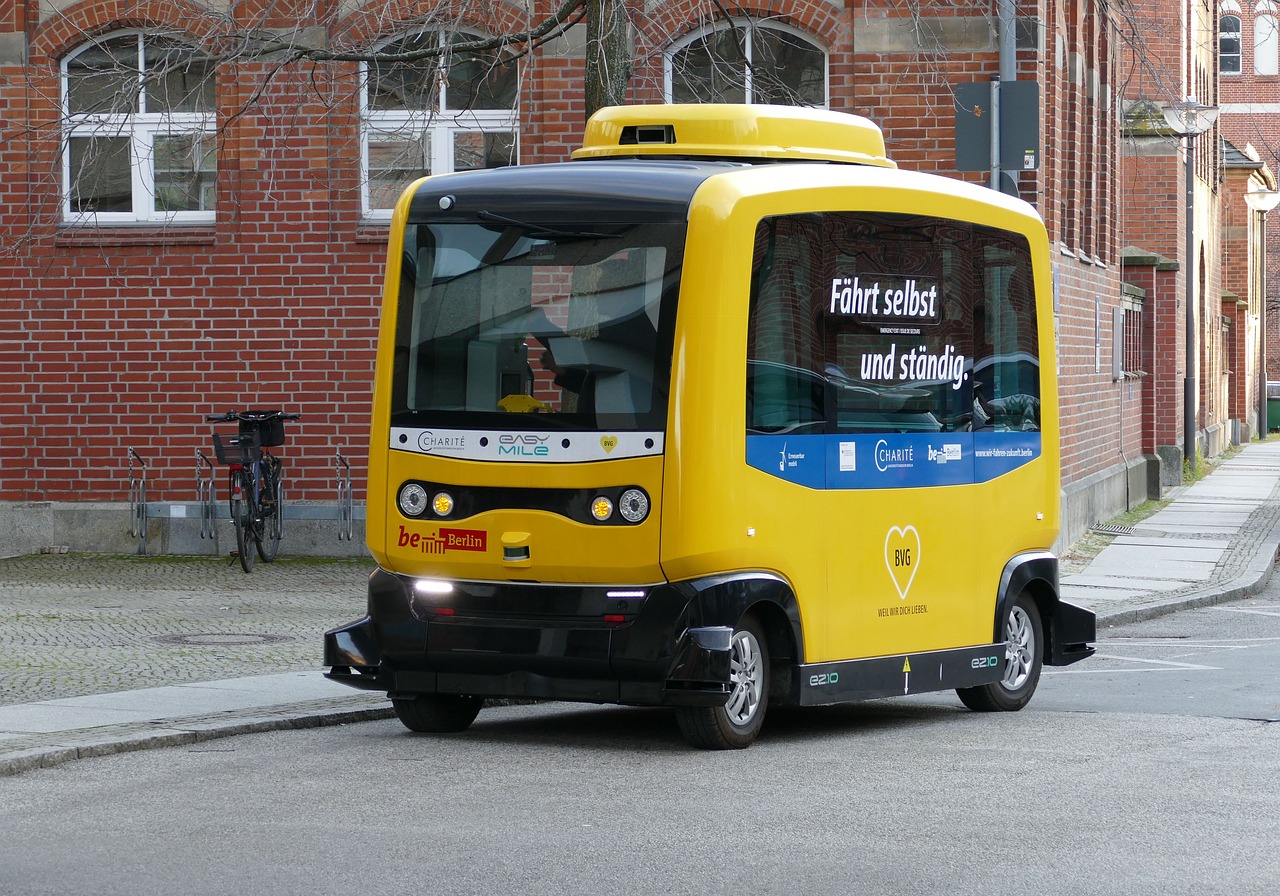
7. Future Trends in Drone Technology
The future of drone technology is not just about flying gadgets; it’s about transformative changes that will redefine industries and enhance our daily lives. As we look ahead, several key trends are emerging that will shape the capabilities and applications of autonomous drones. One of the most exciting trends is the integration of artificial intelligence (AI) and machine learning, which will allow drones to perform tasks with unprecedented efficiency and adaptability. Imagine a drone that can analyze its surroundings in real-time, make decisions on the fly, and adjust its flight path to avoid obstacles, all while gathering critical data. This level of autonomy is not just a dream; it’s on the horizon.
Moreover, advancements in battery technology are set to extend the operational range and flight time of drones significantly. Currently, many drones are limited by their battery life, which restricts their usability in long-distance deliveries or extensive agricultural surveys. However, with the development of solid-state batteries and improved energy efficiency, we can anticipate drones that can fly longer and carry heavier payloads, opening up new possibilities in logistics and emergency services.
As we dive deeper into the specifics, we can expect to see:
- Enhanced Autonomy: Future drones will likely have improved navigation systems that incorporate advanced algorithms, enabling them to navigate complex environments without human intervention.
- Swarm Technology: Imagine multiple drones working together like a flock of birds, communicating with each other to complete tasks more efficiently. This swarm technology could revolutionize search and rescue operations, agricultural monitoring, and even entertainment.
- Regulatory Changes: As drone technology advances, so will the need for updated regulations. Expect to see new frameworks that address safety, privacy, and air traffic management, which will facilitate the broader adoption of drones in various sectors.
Furthermore, the concept of urban air mobility is gaining traction. This involves the use of drones for transporting people and goods within urban areas, potentially alleviating traffic congestion and reducing travel times. Imagine hopping on a drone taxi to avoid the morning rush hour—it's not science fiction anymore! Companies are already testing prototypes, and as regulations catch up, we could see these services becoming a reality sooner than we think.
In summary, the future of drone technology is bright and filled with potential. With AI and machine learning at the forefront, alongside advancements in battery life and regulatory frameworks, drones are poised to become an integral part of our daily lives. Whether it’s through enhanced delivery systems, improved agricultural practices, or urban air mobility, the possibilities are endless, and the impacts will be profound.
Q1: What role will AI play in future drone technology?
A1: AI will enable drones to make real-time decisions, adapt to changing environments, and perform complex tasks autonomously, significantly enhancing their efficiency and effectiveness.
Q2: How will battery technology impact drone operations?
A2: Improved battery technology will extend the flight time and range of drones, allowing them to cover larger areas and carry heavier payloads, which is crucial for applications in logistics and emergency services.
Q3: What is urban air mobility, and how will it change transportation?
A3: Urban air mobility refers to the use of drones for transporting people and goods within cities. This could reduce traffic congestion and provide faster transportation options, fundamentally changing how we navigate urban environments.
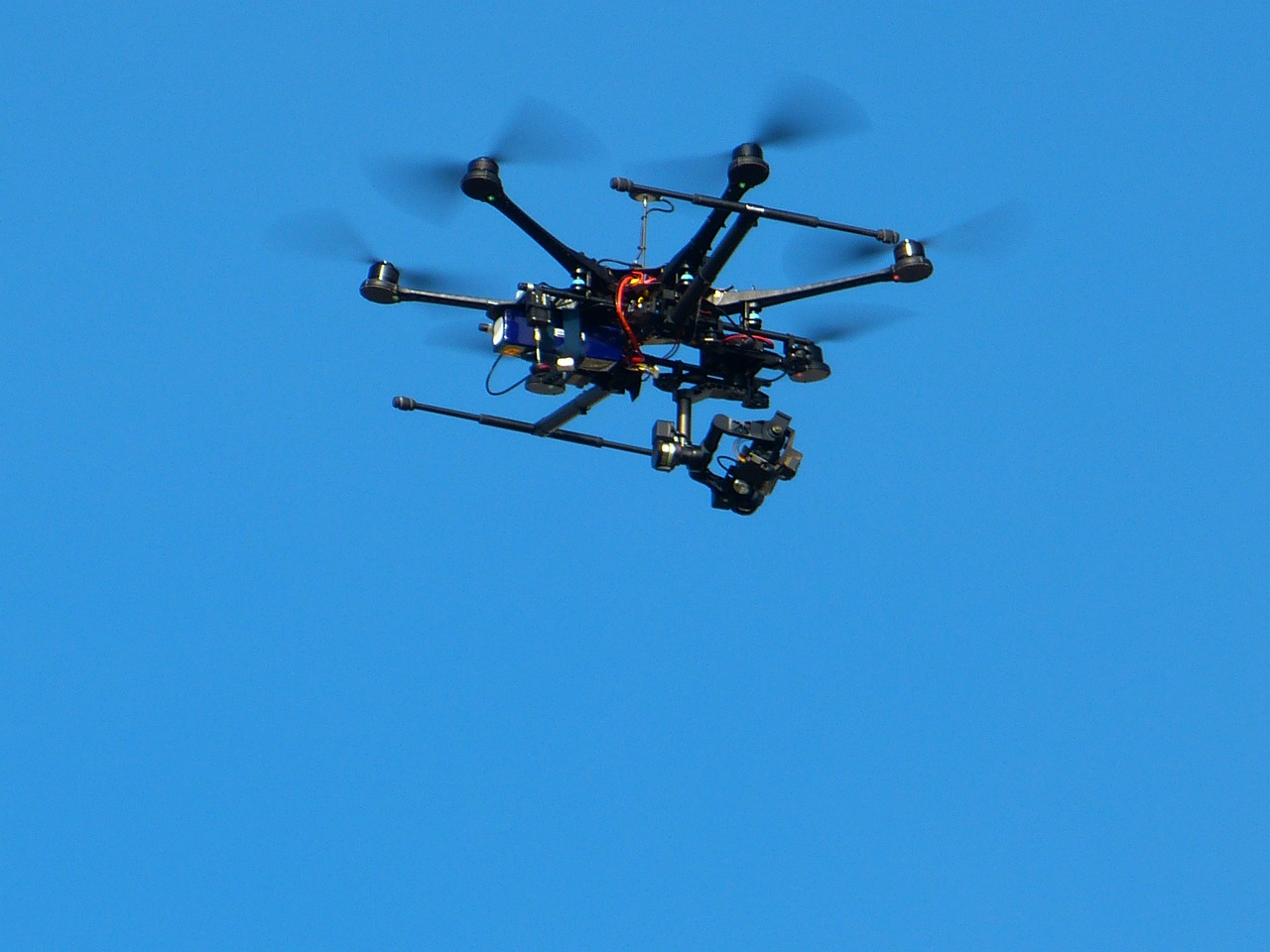
7.1 AI and Machine Learning
In the ever-evolving world of technology, AI and machine learning are at the forefront of transforming how autonomous drones operate. Imagine a drone that not only flies but also learns from its environment, adapting its flight paths and strategies to optimize performance. This leap into the future is not just a dream; it’s happening right now. With the integration of advanced algorithms, drones can process vast amounts of data in real-time, making them smarter and more efficient.
One of the most exciting aspects of AI in drone technology is its ability to make real-time decisions. For instance, when a drone is deployed for agricultural monitoring, it can analyze crop health and immediately determine if an area requires more water or if there’s a pest issue. This capability not only saves time but also enhances the effectiveness of interventions, leading to better yields and reduced waste. Furthermore, the incorporation of machine learning allows these drones to improve their decision-making processes over time. They learn from past experiences, which means that the more they are used, the better they become at performing their tasks.
Moreover, AI enhances the autonomy of drones by enabling them to navigate complex environments without human intervention. For example, drones equipped with advanced obstacle avoidance systems can fly in crowded urban areas, avoiding buildings and other obstacles while delivering packages. The integration of computer vision allows drones to recognize and react to their surroundings in a way that mimics human perception. This technology is crucial for applications such as search and rescue missions, where drones can autonomously locate missing persons in difficult terrains.
As we look to the future, the potential applications of AI and machine learning in drone technology are limitless. Here are a few key areas where we can expect to see significant advancements:
- Enhanced Navigation: Drones will have improved systems that allow them to navigate through challenging environments with ease.
- Predictive Analytics: Drones will be able to predict outcomes based on historical data, making them invaluable in various sectors.
- Adaptive Learning: Drones will continuously learn and adapt their operations based on new data, improving efficiency over time.
In conclusion, the integration of AI and machine learning into autonomous drones represents a paradigm shift in how we utilize aerial technology. As these systems continue to evolve, we can expect to see a future where drones not only assist in various industries but also enhance our capabilities in ways we never thought possible. The sky is truly the limit!
- What is the role of AI in autonomous drones?
AI enables drones to make real-time decisions, learn from their environment, and improve their performance over time. - How does machine learning enhance drone capabilities?
Machine learning allows drones to analyze data and adapt their operations based on past experiences, leading to increased efficiency and effectiveness. - Can drones navigate autonomously in complex environments?
Yes, with advanced AI and obstacle avoidance technologies, drones can navigate through challenging terrains without human intervention.
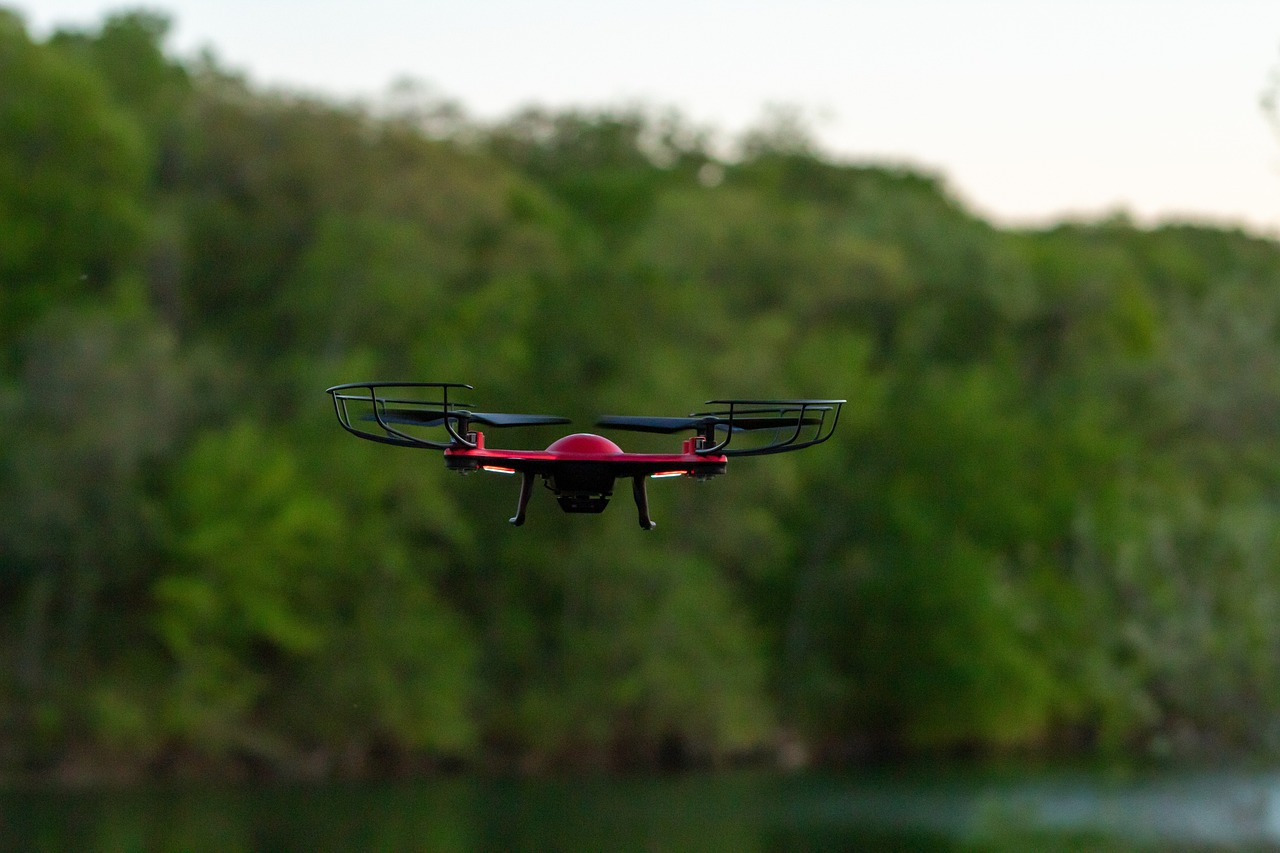
7.2 Enhanced Autonomy
The concept of enhanced autonomy in drones is not just a futuristic dream; it's rapidly becoming a reality that is reshaping various industries. As we delve into this realm, we discover that advancements in technology are enabling drones to operate with a level of independence that was once unimaginable. Imagine a drone that can navigate complex environments without human intervention, making real-time decisions based on its surroundings. This is the essence of enhanced autonomy, and it's a game-changer.
One of the key components driving this evolution is the integration of sophisticated navigation systems and sensor technologies. These systems allow drones to perceive their environment in three dimensions, recognizing obstacles and adjusting their flight paths accordingly. For instance, with the help of LiDAR and computer vision, drones can map their surroundings, identify potential hazards, and even communicate with other drones in the area to optimize flight routes. This level of coordination not only enhances safety but also increases operational efficiency.
Moreover, the use of artificial intelligence (AI) is revolutionizing autonomous flight. AI algorithms enable drones to learn from their experiences, improving their decision-making capabilities over time. For example, a drone tasked with delivering packages can learn the best routes based on traffic patterns, weather conditions, and even customer preferences. This adaptability ensures that deliveries are made more quickly and efficiently, ultimately benefiting businesses and consumers alike.
As we look to the future, the potential applications of enhanced autonomy are vast. In agriculture, drones equipped with advanced autonomy can autonomously monitor large fields, detecting crop health issues and optimizing irrigation without the need for constant human oversight. In urban settings, autonomous drones could revolutionize logistics by navigating busy streets and delivering goods directly to consumers' doorsteps, all while avoiding obstacles and ensuring safety.
However, with great power comes great responsibility. As drones become more autonomous, the need for robust safety protocols and regulations becomes increasingly critical. The industry must address challenges such as collision avoidance, flight path planning, and emergency response strategies to ensure that these advanced machines operate safely within our airspace.
In conclusion, enhanced autonomy in drones is set to redefine how we interact with technology. The combination of advanced navigation systems, AI, and real-time decision-making capabilities is paving the way for a future where drones operate seamlessly in various environments. As we embrace these advancements, we must also consider the implications for safety and regulation to ensure that this technology benefits society as a whole.
- What is enhanced autonomy in drones? Enhanced autonomy refers to the ability of drones to operate independently, making real-time decisions based on their environment without human intervention.
- How does AI contribute to enhanced autonomy? AI enables drones to learn from their experiences, improving their decision-making and adaptability in various situations.
- What are some applications of enhanced autonomy? Applications include precision agriculture, urban logistics, and emergency response, where drones can operate efficiently in complex environments.
- What challenges does enhanced autonomy face? Key challenges include ensuring safety, developing reliable collision avoidance systems, and creating appropriate regulatory frameworks.
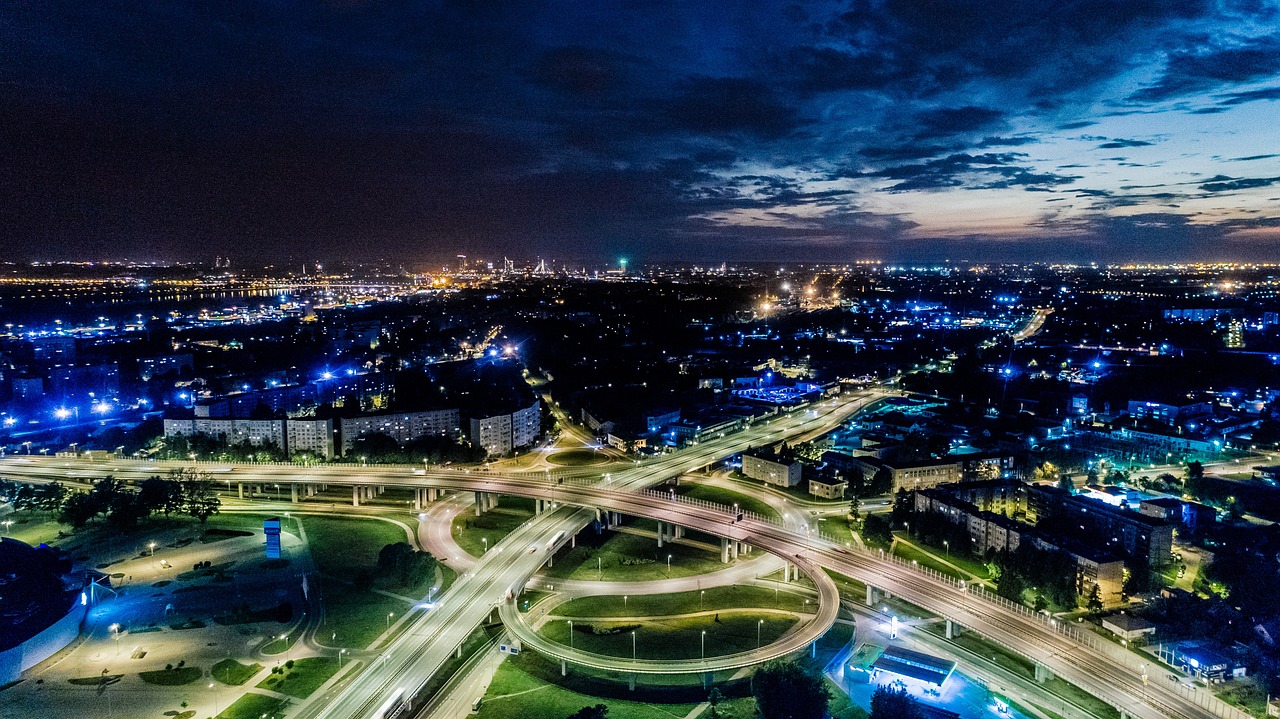
8. Economic Impacts of Autonomous Drones
The rise of autonomous drones is not just a technological marvel; it's also a game-changer for the economy. As these flying robots become more integrated into various industries, they are generating a ripple effect that touches everything from job creation to operational cost savings. Imagine a world where deliveries are made in minutes instead of days, or where farmers can monitor their crops from the sky without breaking a sweat. This is not science fiction; it's happening right now, and the economic implications are profound.
One of the most significant impacts of autonomous drones is their ability to create new job opportunities. As businesses adopt this technology, there is a growing demand for skilled workers who can operate, maintain, and innovate drone systems. According to industry reports, the drone sector is expected to generate over 100,000 new jobs in the next decade alone. These roles span various fields, including technology, logistics, agriculture, and environmental monitoring. For example, farmers may need drone operators to manage aerial surveys, while logistics companies will require drone technicians to ensure smooth operations.
In addition to job creation, autonomous drones also promise substantial cost savings for businesses. By streamlining operations, companies can reduce labor costs, enhance delivery efficiency, and minimize waste. For instance, a study conducted by the Federal Aviation Administration (FAA) estimates that the integration of drones into commercial operations could save the U.S. economy up to $82 billion over the next decade. This is achieved through a combination of faster delivery times, reduced fuel consumption, and lower operational costs. In agriculture, farmers can utilize drones for precision farming, which allows them to apply resources like water and fertilizers more efficiently, ultimately leading to increased yields and lower expenses.
To better illustrate the economic impacts, consider the following table that outlines some key benefits of autonomous drones:
| Economic Impact | Description |
|---|---|
| Job Creation | New roles in drone operation, maintenance, and technology development. |
| Cost Efficiency | Reduction in operational costs through automation and efficiency. |
| Increased Productivity | Enhanced operational capabilities lead to higher outputs in various sectors. |
| Market Expansion | Emergence of new industries and services related to drone technology. |
Moreover, the economic landscape is shifting as new markets emerge around drone technology. For instance, industries such as aerial photography, surveillance, and agriculture are witnessing a surge in demand for drone-related services. This not only diversifies the economy but also encourages innovation as companies strive to develop new applications for drones. The potential for new markets is vast, and as technology continues to evolve, we can expect to see even more creative uses for drones that we haven't yet imagined.
In conclusion, the economic impacts of autonomous drones are multifaceted and significant. From creating new job opportunities to enhancing operational efficiencies and fostering market growth, drones are poised to reshape various industries. As we navigate this exciting frontier, it's essential to understand and embrace the changes that come with it, recognizing that the sky is not the limit—it's just the beginning.
- What industries will be most affected by autonomous drones?
Industries such as agriculture, logistics, emergency services, and environmental monitoring are expected to experience significant changes due to the integration of autonomous drones. - How do autonomous drones save costs for businesses?
They reduce labor costs, enhance delivery efficiency, and minimize waste, leading to overall lower operational expenses. - Will autonomous drones create new job opportunities?
Yes, the drone industry is projected to create over 100,000 new jobs in the coming years across various sectors. - What are some potential new markets for drone technology?
New markets may include aerial photography, drone delivery services, and precision agriculture, among others.
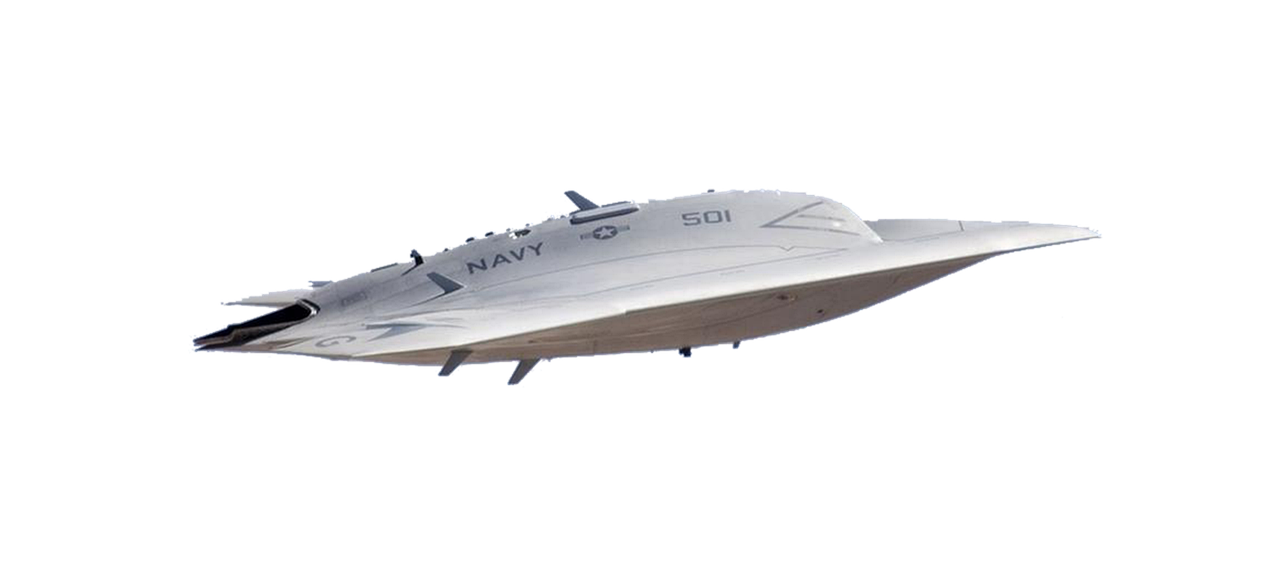
8.1 Job Creation
The rise of autonomous drones is not just a technological marvel; it is a significant catalyst for job creation across various sectors. As industries increasingly adopt drone technology, they are not merely replacing traditional roles but are also creating entirely new career paths that didn't exist a decade ago. Imagine stepping into a world where drone operators, maintenance technicians, and data analysts are in high demand—this is the reality that autonomous drones are ushering in.
In agriculture, for instance, the integration of drones into farming practices has led to the emergence of specialized roles such as drone agronomists and precision farming consultants. These professionals are responsible for interpreting aerial data to enhance crop yields and optimize resource usage. The demand for skilled individuals who can operate drones and analyze the data they collect is skyrocketing, and educational institutions are already adapting their curricula to meet this need.
Moreover, the logistics and delivery sectors are witnessing a similar transformation. Companies are now looking for drone logistics managers and delivery coordinators who can oversee the deployment of drone fleets. This shift not only creates jobs but also enhances operational efficiency, allowing businesses to deliver products faster and at a lower cost. The potential for job creation in this field is immense, as the e-commerce industry continues to evolve and expand.
Here’s a quick look at some of the job roles being created due to the rise of autonomous drones:
- Drone Operators: Skilled individuals who pilot drones for various applications, from agriculture to delivery.
- Data Analysts: Professionals who interpret the data collected by drones to provide actionable insights.
- Maintenance Technicians: Experts who ensure that drones are in optimal working condition, performing routine checks and repairs.
- Regulatory Compliance Officers: Specialists who navigate the complex landscape of drone regulations to ensure that companies adhere to legal standards.
Additionally, the drone industry is not only about direct job creation; it also stimulates growth in ancillary sectors. For example, as drone technology advances, there's a growing need for software developers to create applications that enhance drone functionality. This technological ecosystem fosters innovation and entrepreneurship, leading to a ripple effect of job opportunities across various fields.
In summary, the impact of autonomous drones on job creation is profound and multifaceted. As we embrace this technology, we are not only witnessing the birth of new job roles but also the transformation of existing ones. The future looks bright, and those who are willing to adapt will find themselves at the forefront of this exciting new industry.
Q: What types of jobs are available in the drone industry?
A: The drone industry offers various roles, including drone operators, data analysts, maintenance technicians, and regulatory compliance officers, among others.
Q: How can I prepare for a career in the drone industry?
A: Gaining experience through training programs, obtaining relevant certifications, and staying updated on industry trends can help you prepare for a career in the drone sector.
Q: Are there educational programs focused on drone technology?
A: Yes, many universities and technical schools now offer programs and courses specifically designed to teach drone technology and its applications.
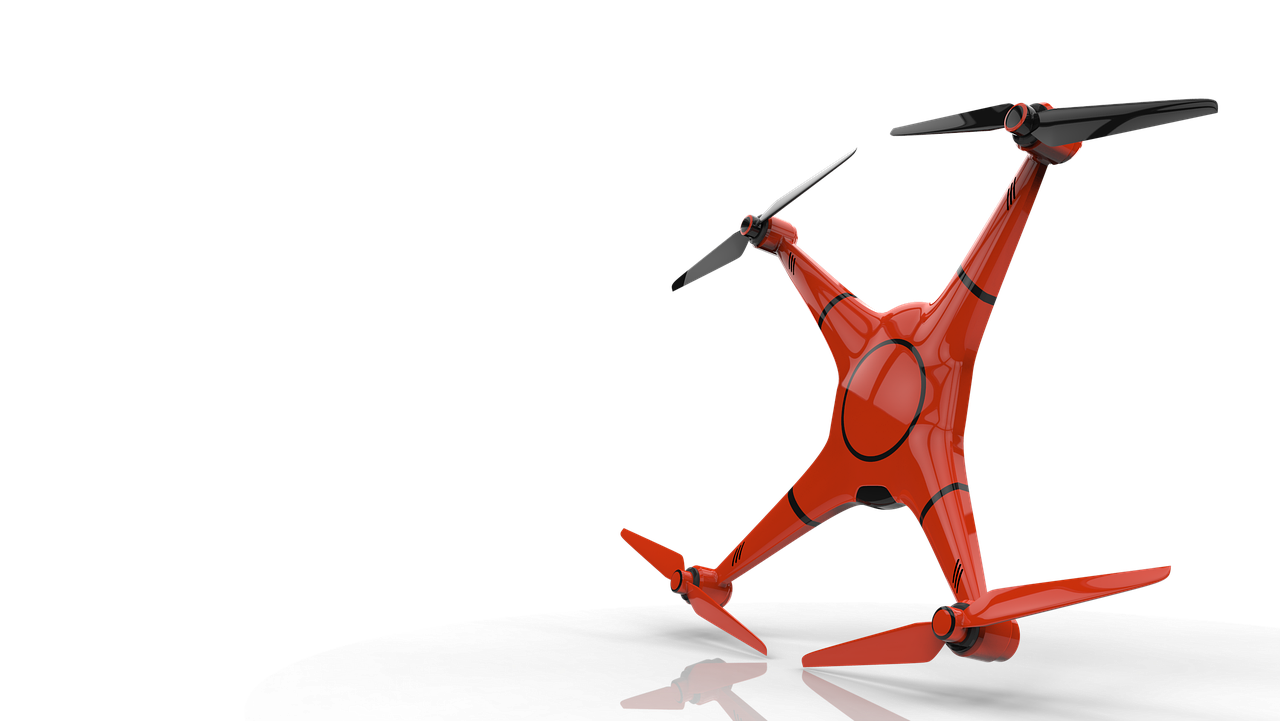
8.2 Cost Efficiency
In today's fast-paced world, businesses are constantly seeking ways to cut costs while maximizing efficiency, and autonomous drones are proving to be a game changer in this respect. These high-tech flying machines are not just a novelty; they represent a significant leap forward in operational efficiency across various industries. Imagine a delivery service that can bypass traffic jams, or a farmer who can monitor vast fields without stepping foot outside. The potential for cost savings is immense, and here's why.
Firstly, autonomous drones drastically reduce labor costs. Traditional methods of monitoring crops or delivering packages often require numerous personnel, which translates to higher wages and associated expenses. By automating these tasks, companies can reallocate human resources to more strategic roles, enhancing productivity without increasing overhead. For instance, a single drone can perform the work of multiple employees in less time, leading to a substantial decrease in labor costs.
Secondly, drones enhance operational efficiency by minimizing resource waste. In agriculture, for example, drones equipped with advanced sensors can collect precise data on crop health, allowing farmers to apply water, fertilizers, and pesticides only where needed. This targeted approach not only boosts crop yields but also significantly reduces the amount of resources used. According to recent studies, precision farming can lead to a reduction in input costs by up to 30%, which is a remarkable saving for any agricultural business.
Moreover, the speed at which drones operate contributes to their cost efficiency. Drones can cover large areas in a fraction of the time it would take a human or a vehicle. This rapid deployment means that businesses can respond to issues more quickly, whether it's delivering a package or assessing crop conditions. The faster turnaround times can lead to increased customer satisfaction and retention, which is vital in today's competitive landscape.
To illustrate these points, consider the following table that outlines potential cost savings across different sectors:
| Sector | Traditional Method Cost | Drone Method Cost | Potential Savings (%) |
|---|---|---|---|
| Agriculture | $100,000 | $70,000 | 30% |
| Delivery Services | $50,000 | $35,000 | 30% |
| Construction | $80,000 | $60,000 | 25% |
Lastly, it's essential to consider the long-term savings associated with drone technology. While the initial investment in drones may seem steep, the return on investment (ROI) can be significant. Businesses that adopt drone technology often find that their operational costs decrease over time as they become more efficient and effective in their processes. Additionally, as drone technology continues to advance, the cost of acquiring and maintaining these devices is expected to decrease, making them even more accessible to small and medium-sized enterprises.
In conclusion, the cost efficiency of autonomous drones is not just a fleeting trend; it's a fundamental shift in how businesses operate. By leveraging the capabilities of drones, companies can not only save money but also enhance their overall operational effectiveness. The future is clear: those who embrace this technology will likely lead the way in their respective industries.
- What industries benefit the most from autonomous drones? Autonomous drones are beneficial in agriculture, delivery services, construction, and environmental monitoring, among others.
- How do drones help in reducing costs? Drones reduce labor costs, minimize resource waste, and enhance operational efficiency, leading to significant savings.
- Are there any safety concerns associated with drone usage? Yes, safety and privacy concerns exist, and regulations are being developed to address these issues.
- What is the future of drone technology? The future includes advancements in AI integration, improved battery life, and enhanced autonomy, making drones even more efficient.
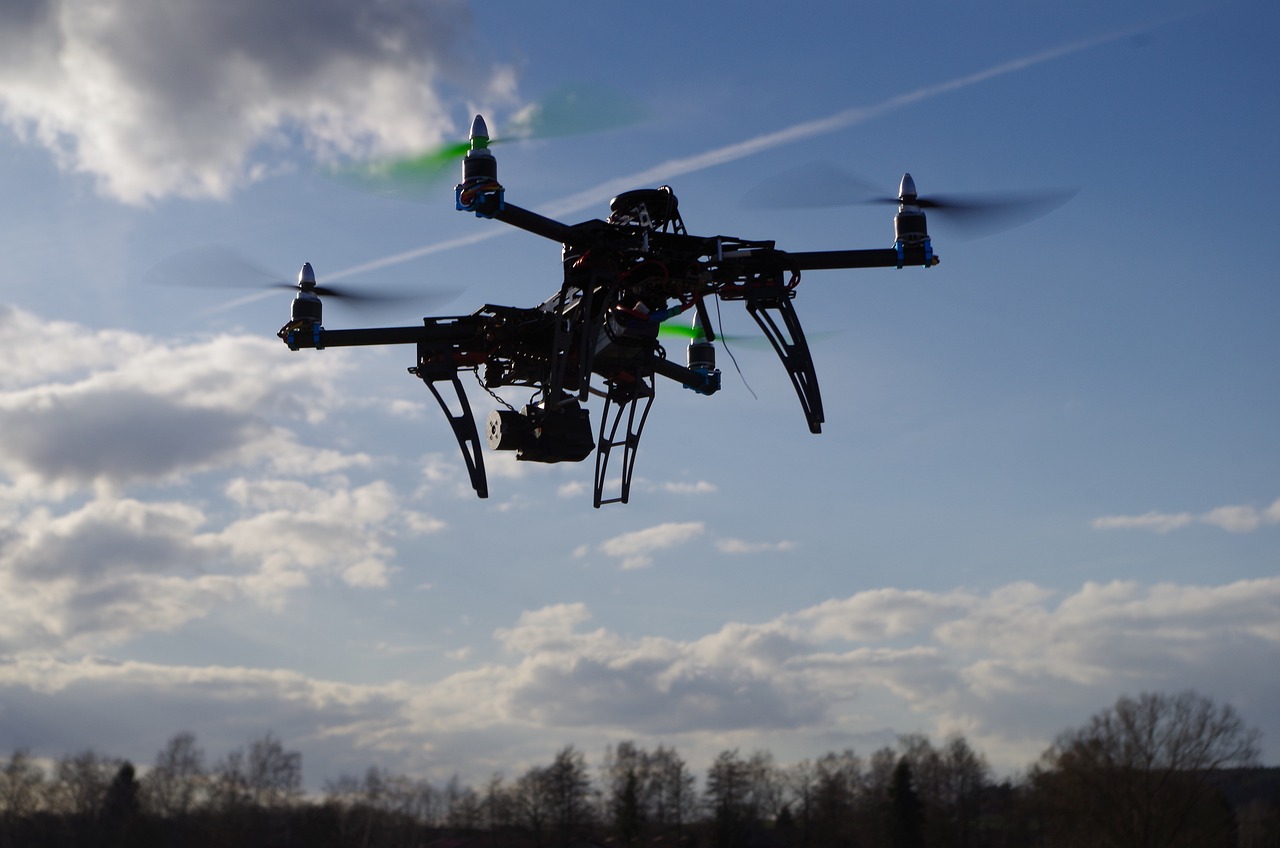
9. Public Perception and Acceptance
The rise of autonomous drones has sparked a myriad of opinions among the public. On one hand, there’s a palpable excitement about the possibilities these flying machines bring to various sectors, from agriculture to emergency services. On the other hand, there are significant concerns regarding safety, privacy, and the overall impact on society. It’s a classic case of innovation versus apprehension, where the promise of technology can often be overshadowed by fears of its implications.
Understanding public perception is crucial for the successful integration of autonomous drones into daily life. Many people are still wrapping their heads around the concept of drones flying overhead, delivering packages, or monitoring crops. This unfamiliarity can lead to skepticism. For instance, when drones are mentioned, some individuals immediately think of privacy violations or accidents. The media often amplifies these fears, showcasing incidents where drones have malfunctioned or been used for nefarious purposes. To counteract this, it’s essential to engage in open dialogues that educate the public on the safety measures and regulations in place to govern drone operations.
Moreover, addressing public concerns directly is vital. Here are a few strategies that can help:
- Transparency: Companies and regulatory bodies should provide clear information about how drones operate and the safety protocols involved.
- Community Engagement: Involving local communities in drone projects can foster trust and acceptance. When people feel included in the conversation, they are more likely to support the technology.
- Demonstrations: Organizing public demonstrations showcasing the utility and safety of drones can help dispel myths and fears.
Ultimately, the acceptance of autonomous drones will hinge on their perceived benefits versus the risks. As people begin to see how drones can enhance their lives—be it through faster deliveries, improved agricultural practices, or efficient emergency responses—their acceptance is likely to grow. However, this transition will not happen overnight. Continuous education, engagement, and dialogue will be key to shaping a positive public perception.
| Question | Answer |
|---|---|
| What are the main concerns regarding drone use? | Common concerns include safety risks, privacy issues, and potential misuse of drone technology. |
| How can the public get involved in drone initiatives? | Community engagement efforts, such as public forums and demonstrations, are great ways to get involved. |
| What measures are in place to ensure drone safety? | Regulatory bodies enforce strict guidelines and safety protocols for drone operations to minimize risks. |
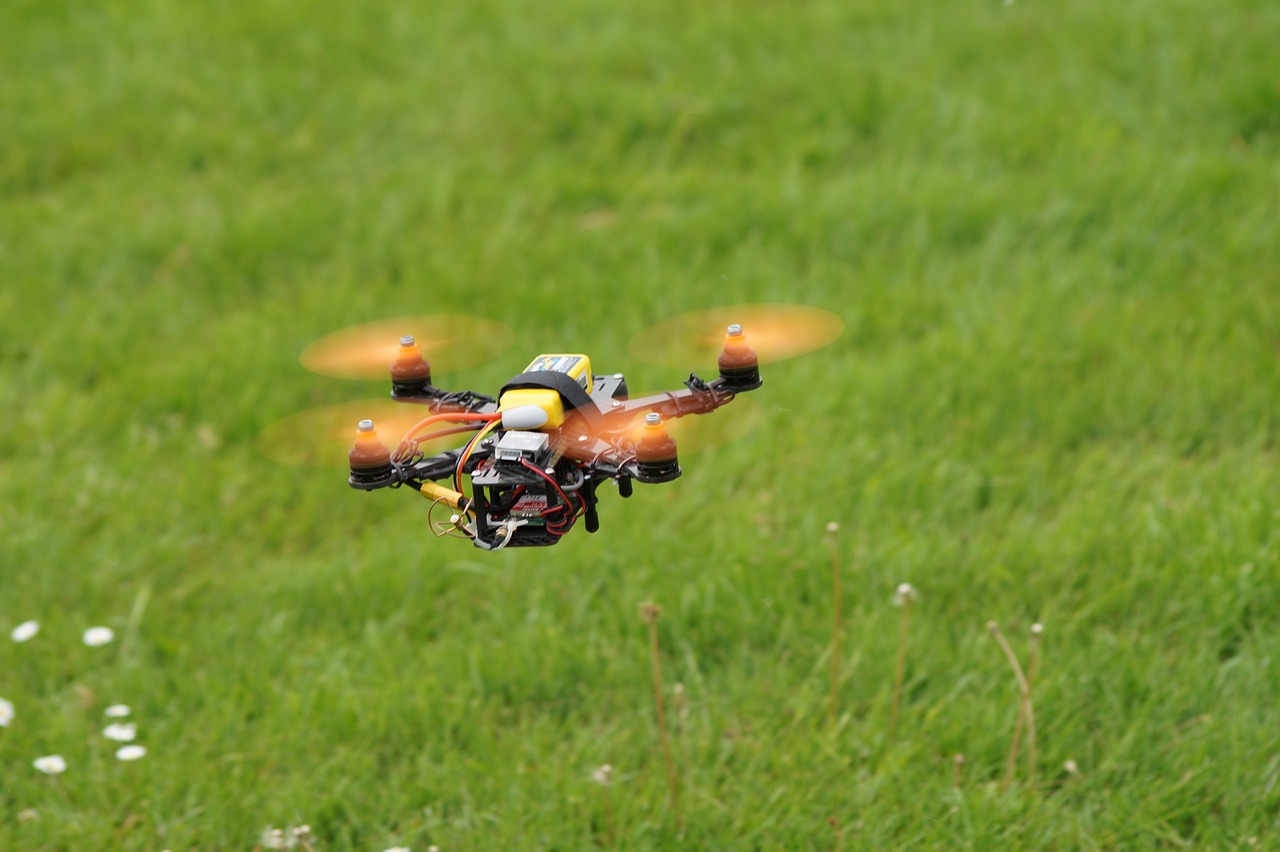
9.1 Addressing Public Concerns
As autonomous drones become more prevalent in our daily lives, addressing public concerns is crucial for their successful integration into society. Many individuals express apprehension regarding safety, privacy, and the overall implications of drone technology. It's essential to understand these concerns and work towards solutions that foster trust and acceptance. One of the primary fears is the potential for drones to invade personal privacy. With drones capable of capturing high-resolution images and videos, people worry about their daily activities being monitored without consent. To mitigate these concerns, drone operators must adhere to strict guidelines that prioritize privacy, including limiting the use of cameras and ensuring data collected is used responsibly.
Another significant concern revolves around safety. The idea of drones flying overhead can be unsettling, especially when considering the possibility of accidents. To address these safety issues, it's vital for drone manufacturers and operators to implement robust safety protocols. This includes:
- Regular maintenance checks on drones to ensure they are functioning correctly.
- Training operators extensively to handle drones in various conditions.
- Establishing no-fly zones, especially in crowded areas, to minimize risks.
Furthermore, public education plays a pivotal role in alleviating fears surrounding drone technology. By organizing community workshops and informational sessions, stakeholders can help demystify drones and explain their benefits, such as improved emergency response times and enhanced agricultural practices. Engaging with the community allows for open dialogue, where residents can voice their concerns and receive answers from knowledgeable sources.
To enhance public acceptance, transparency is key. Drone companies should be open about their operations and the technologies they employ. This transparency can be achieved through:
- Publishing reports on drone usage and the measures taken to ensure safety and privacy.
- Creating platforms for public feedback and suggestions regarding drone operations.
Ultimately, addressing public concerns is not just about mitigating fears; it’s about building a relationship of trust between communities and drone technology. By prioritizing safety, privacy, and education, we can pave the way for a future where autonomous drones are viewed as beneficial tools rather than threats. This proactive approach will not only enhance the adoption of drone technology but also ensure that it is used responsibly and ethically, aligning with the values and expectations of society.
Q1: How are drones regulated to ensure safety and privacy?
A1: Drones are regulated by aviation authorities, which enforce guidelines on their operation, including restrictions on flying over populated areas and privacy laws that govern data collection.
Q2: What measures are in place to prevent drone accidents?
A2: Drone operators are required to undergo training, drones must be regularly maintained, and no-fly zones are established to reduce the risk of accidents.
Q3: How can the public voice their concerns about drone operations?
A3: Communities can engage in public forums, attend workshops, and provide feedback through official channels established by drone operators and regulators.
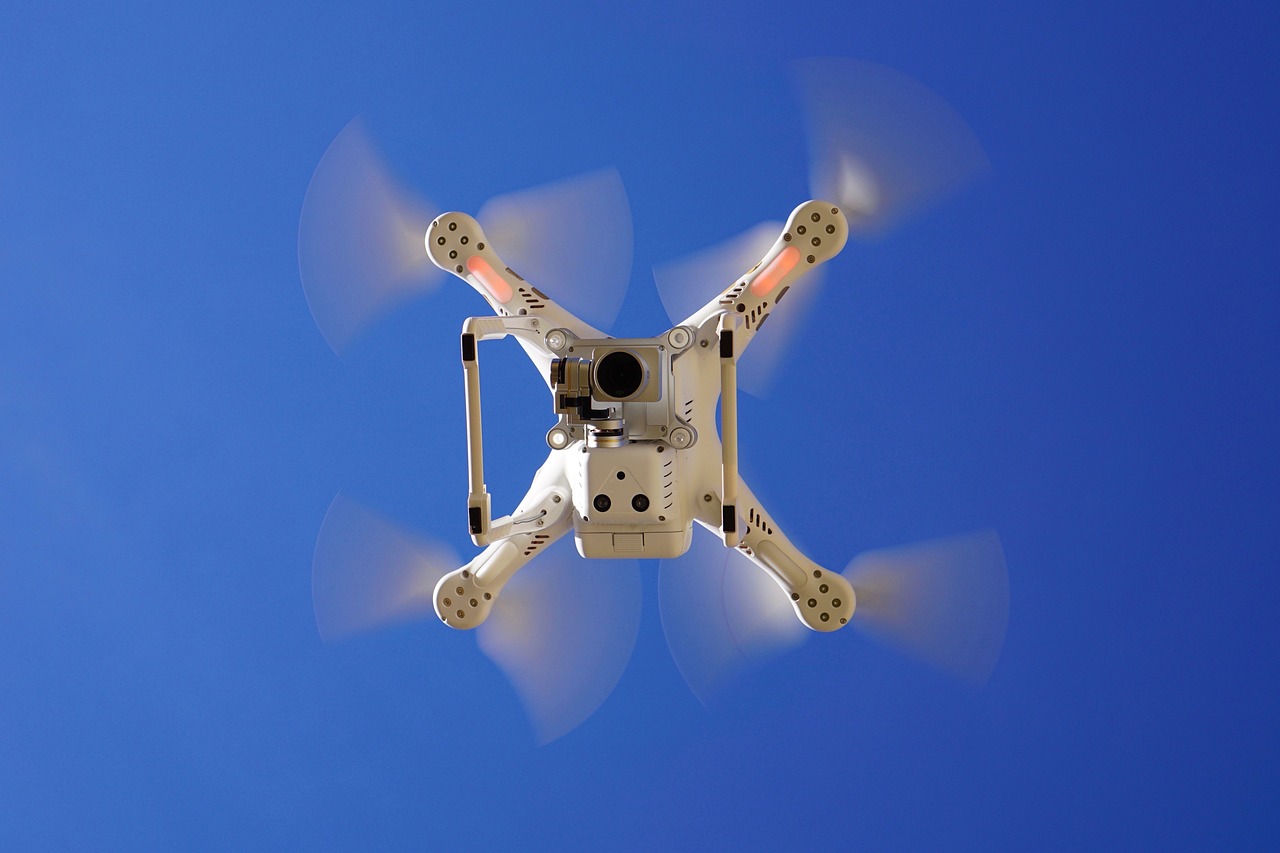
9.2 Community Engagement
Community engagement is a pivotal aspect of the successful deployment of autonomous drones. As these innovative technologies become more prevalent, it is crucial to involve local communities in the conversation. This engagement not only fosters trust but also ensures that the deployment of drones aligns with the needs and concerns of the public. Imagine a neighborhood where drones are buzzing overhead, delivering packages or monitoring traffic. If residents feel left out of the decision-making process, it can lead to anxiety and resistance. Therefore, proactive communication is essential.
One effective method for fostering community engagement is through public forums and workshops. These gatherings provide an opportunity for community members to voice their concerns, ask questions, and learn about the benefits of drone technology. By creating an open dialogue, stakeholders can address issues such as safety, privacy, and noise pollution directly. Furthermore, these sessions can serve as a platform for educating the public about the positive impacts of drones, such as:
- Improved delivery times for essential goods.
- Enhanced emergency response capabilities.
- Innovative agricultural practices that promote sustainability.
Moreover, community engagement can take various forms, including surveys, social media campaigns, and local partnerships. For instance, conducting surveys can help gauge public sentiment towards drone usage, allowing companies and regulatory bodies to tailor their approaches accordingly. Social media platforms can be utilized to share success stories and real-time updates about drone operations, further demystifying the technology. Local partnerships with schools, environmental organizations, and civic groups can also foster a sense of collaboration, encouraging community members to become advocates for responsible drone usage.
Ultimately, the key to successful community engagement lies in transparency and responsiveness. When communities feel heard and valued, they are more likely to embrace new technologies. As we move towards a future where autonomous drones play a significant role in various sectors, it is imperative that we prioritize community engagement as a foundational element. This approach not only enhances the acceptance of drone technologies but also ensures that they are utilized in a manner that benefits everyone.
Q1: What are autonomous drones?
A1: Autonomous drones are unmanned aerial vehicles that can operate without direct human control, using advanced technologies such as GPS, sensors, and artificial intelligence.
Q2: How can communities get involved in drone projects?
A2: Communities can participate through public forums, surveys, and partnerships with local organizations to express their views and concerns about drone operations.
Q3: What are the benefits of using drones in agriculture?
A3: Drones can enhance precision farming, monitor crop health, and manage pests more effectively, leading to increased yields and sustainable agricultural practices.
Q4: Are there privacy concerns associated with autonomous drones?
A4: Yes, privacy concerns are significant, and it is essential for drone operators to implement measures that protect individual privacy while utilizing drone technology.
Frequently Asked Questions
- What are autonomous drones?
Autonomous drones are unmanned aerial vehicles (UAVs) that can operate without direct human control. They use advanced technologies such as GPS, sensors, and artificial intelligence to navigate and perform tasks independently.
- How are drones used in agriculture?
Drones are revolutionizing agriculture by enabling precision farming. They assist in crop monitoring, pest and disease management, and data collection, which leads to increased yields and sustainable farming practices.
- Can drones deliver packages?
Absolutely! Drones are increasingly being used for last-mile delivery in the logistics sector. They can transport packages quickly and efficiently, reducing delivery times and costs for businesses.
- What role do drones play in emergency services?
Drones are invaluable in emergency services, particularly in search and rescue operations and disaster relief. They can quickly survey areas, locate missing persons, and deliver essential supplies to hard-to-reach locations.
- How do drones contribute to environmental monitoring?
Drones are used for wildlife tracking, pollution assessment, and conservation efforts. They help monitor endangered species and their habitats, providing critical data for environmental protection initiatives.
- What are the regulatory challenges for autonomous drones?
The regulatory landscape for drones includes safety and privacy concerns. There is a need for comprehensive regulations to address these issues and ensure safe operations, especially as drone usage increases.
- What future trends can we expect in drone technology?
Future trends include advancements in AI and machine learning, which will enhance drone capabilities. We can also expect improved battery life and greater autonomy, leading to more efficient and versatile drone applications.
- How will drones impact the economy?
The adoption of drones is expected to create new job opportunities and lead to significant cost savings for businesses. This could enhance operational efficiency and give rise to new markets and industries.
- What is the public perception of autonomous drones?
Public perception varies, with some people expressing concerns about safety and privacy. Addressing these concerns through community engagement and education is crucial for fostering a positive view of drone technology.







